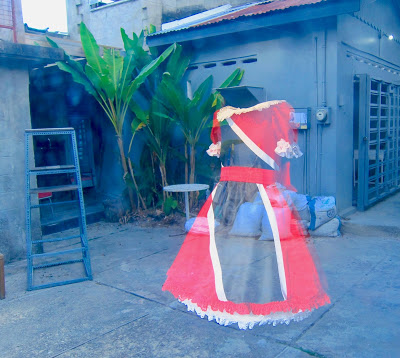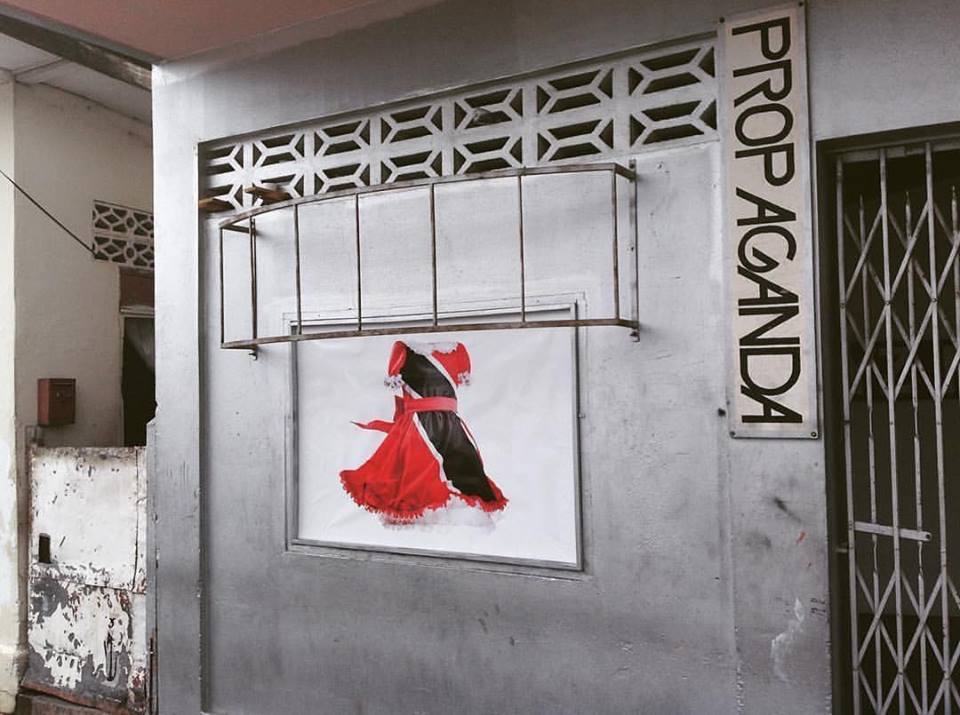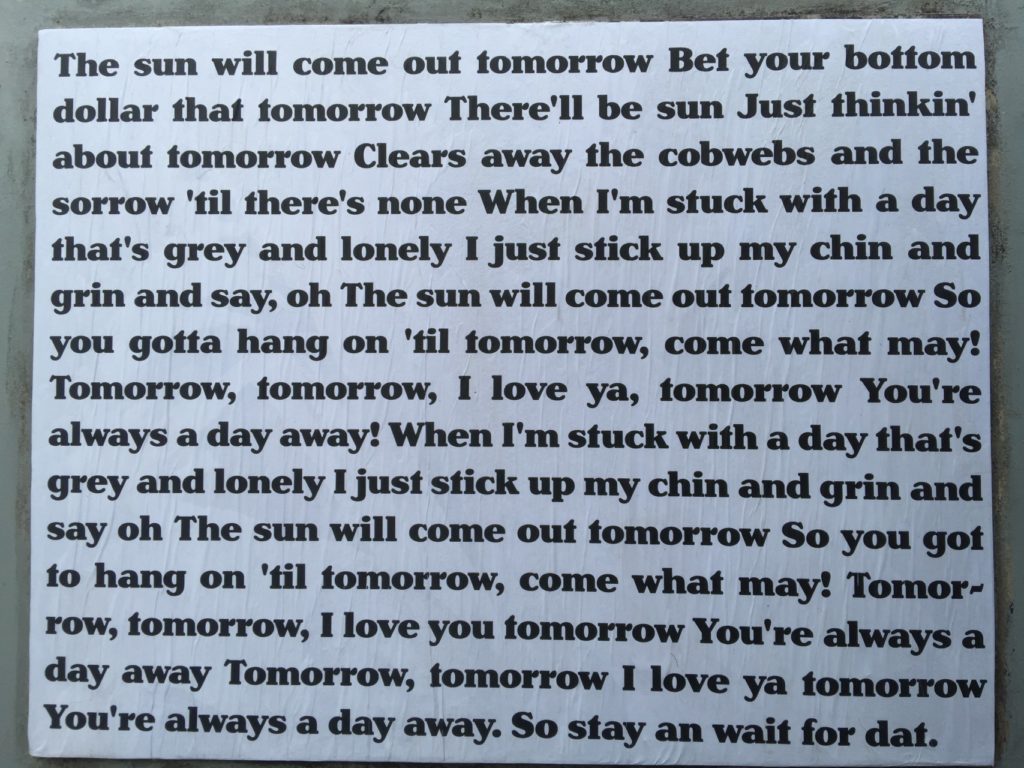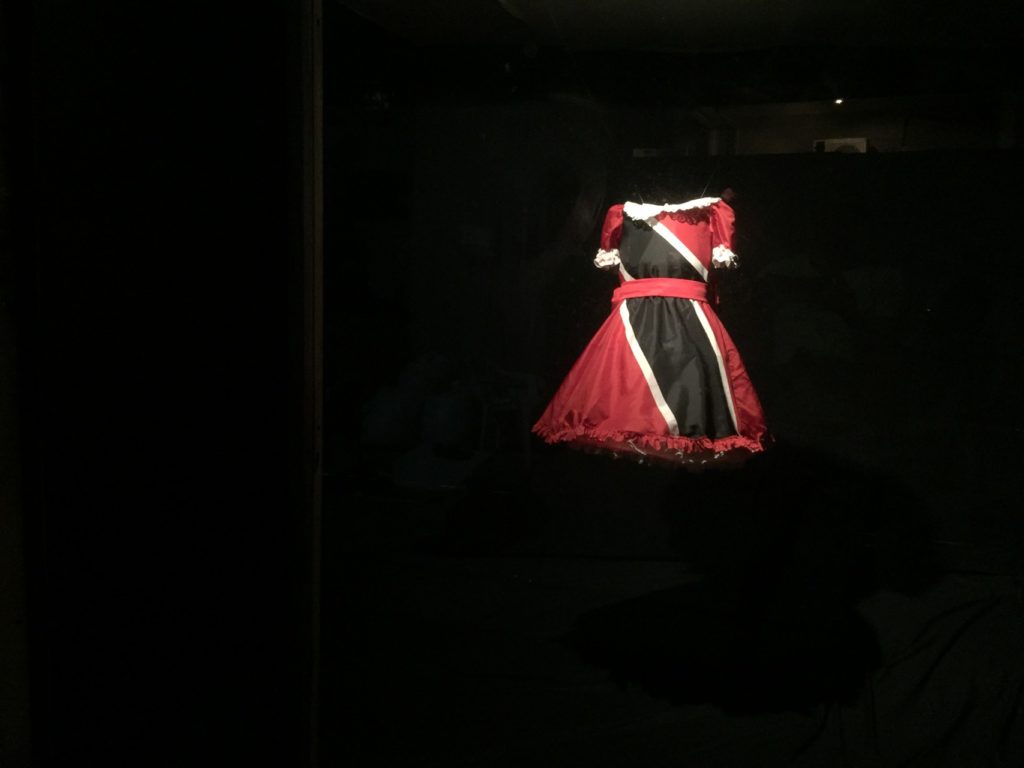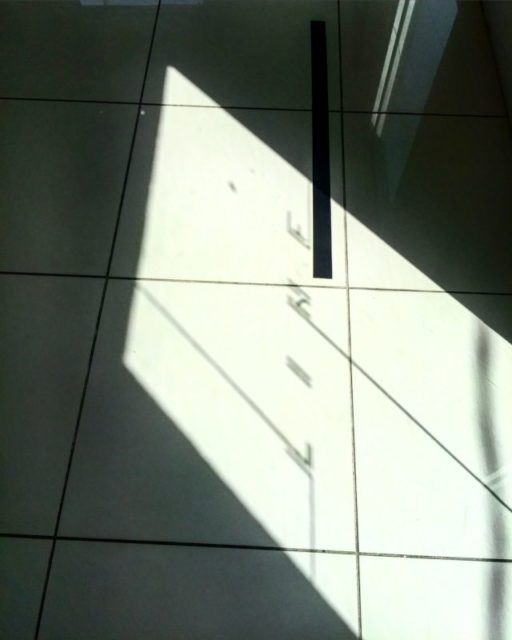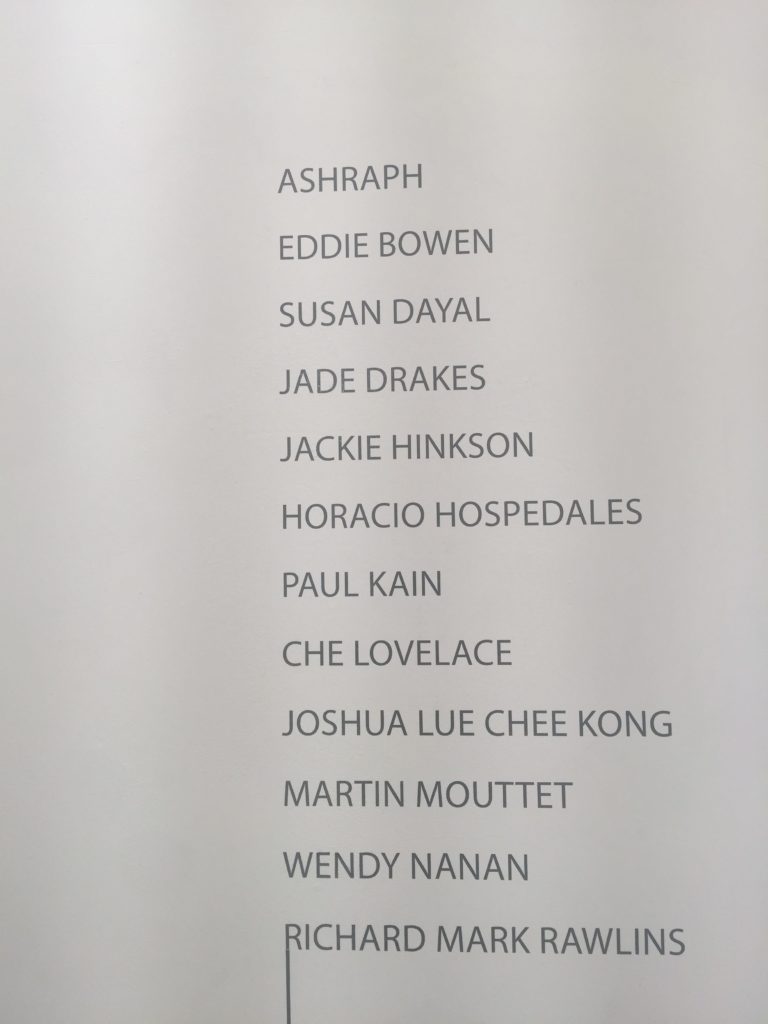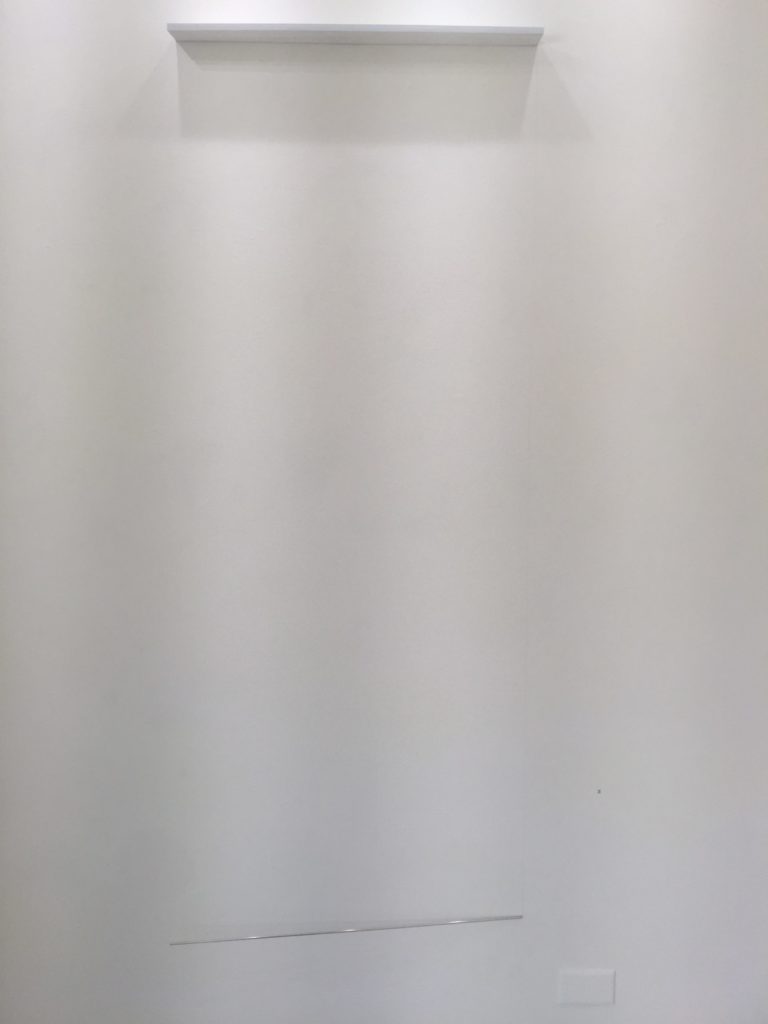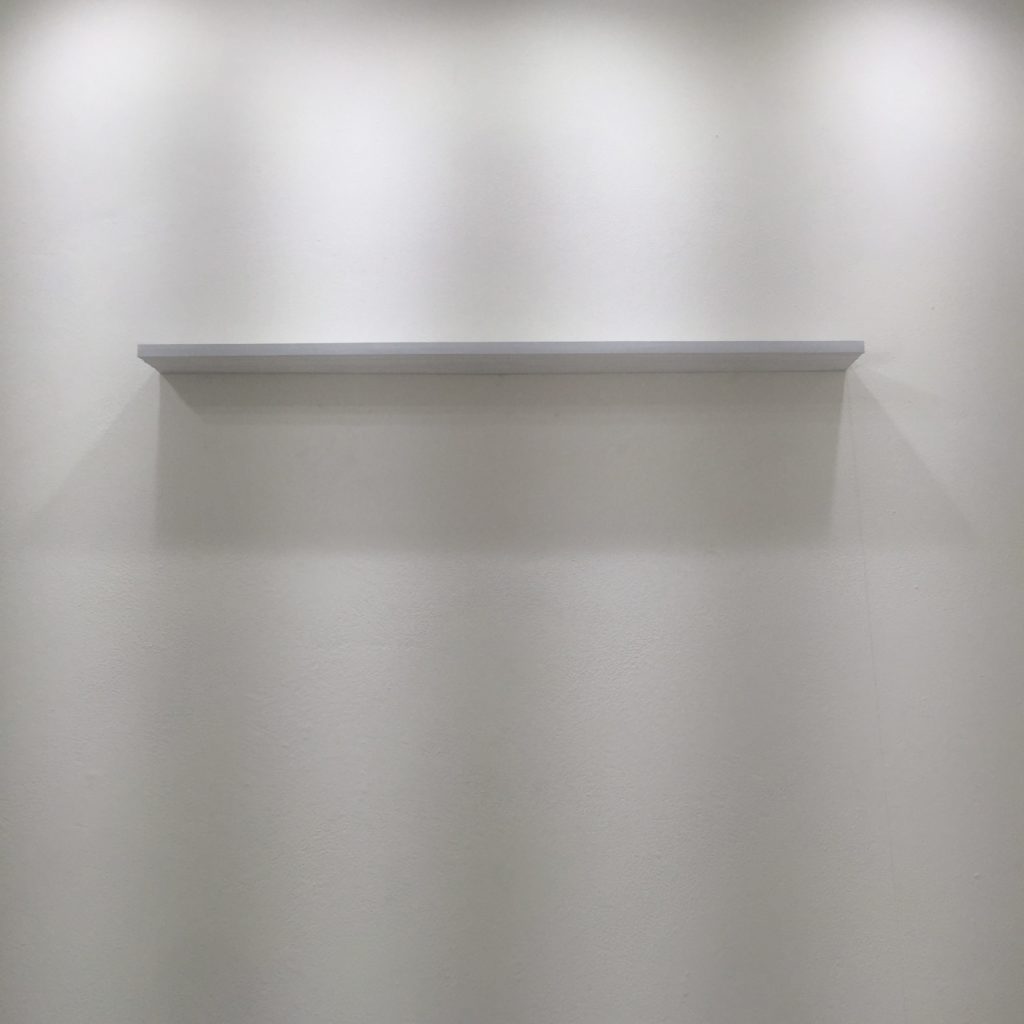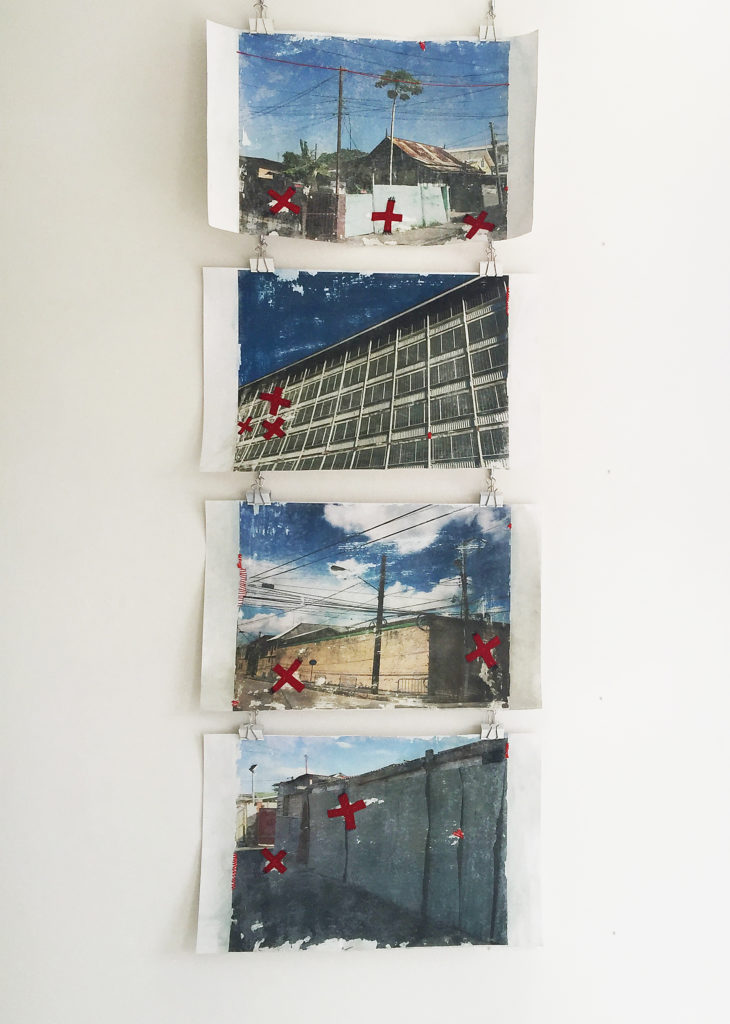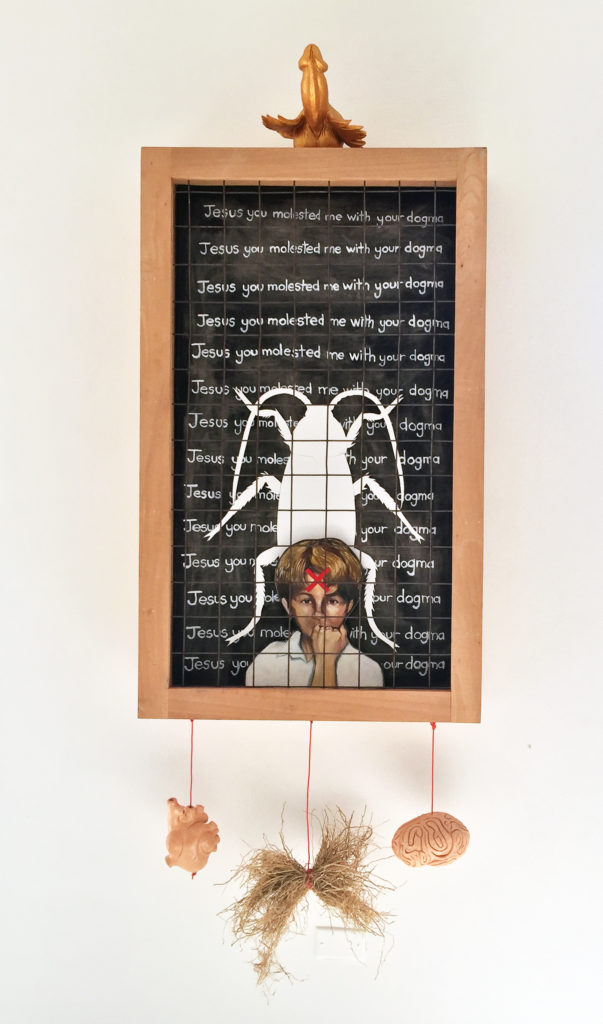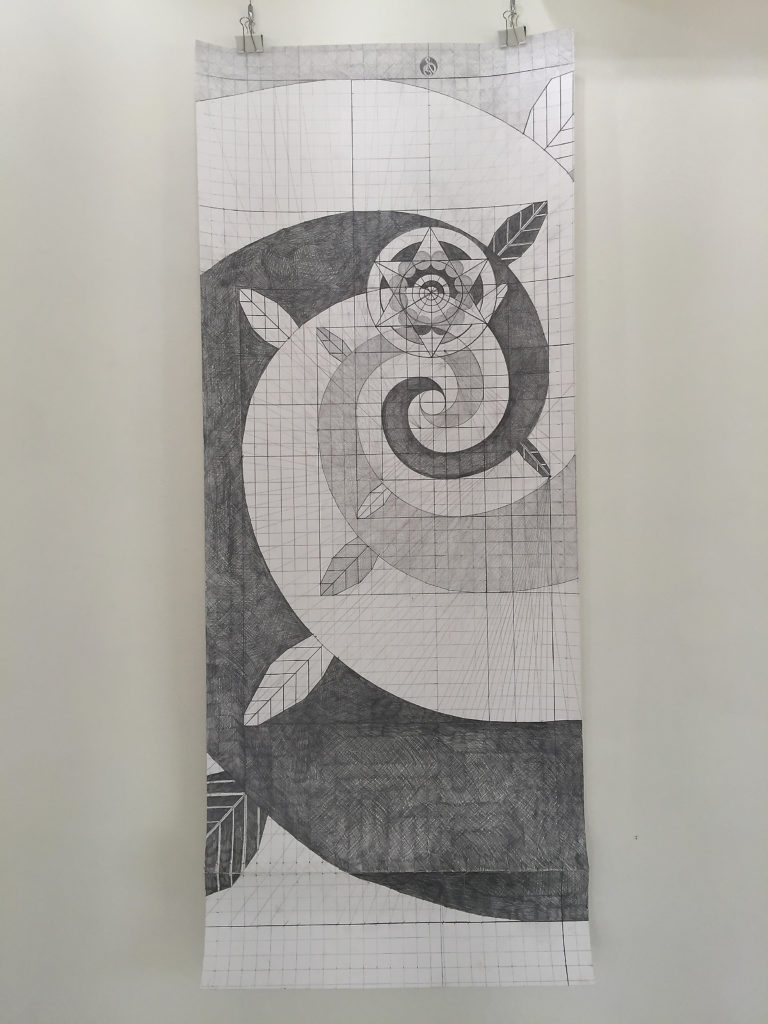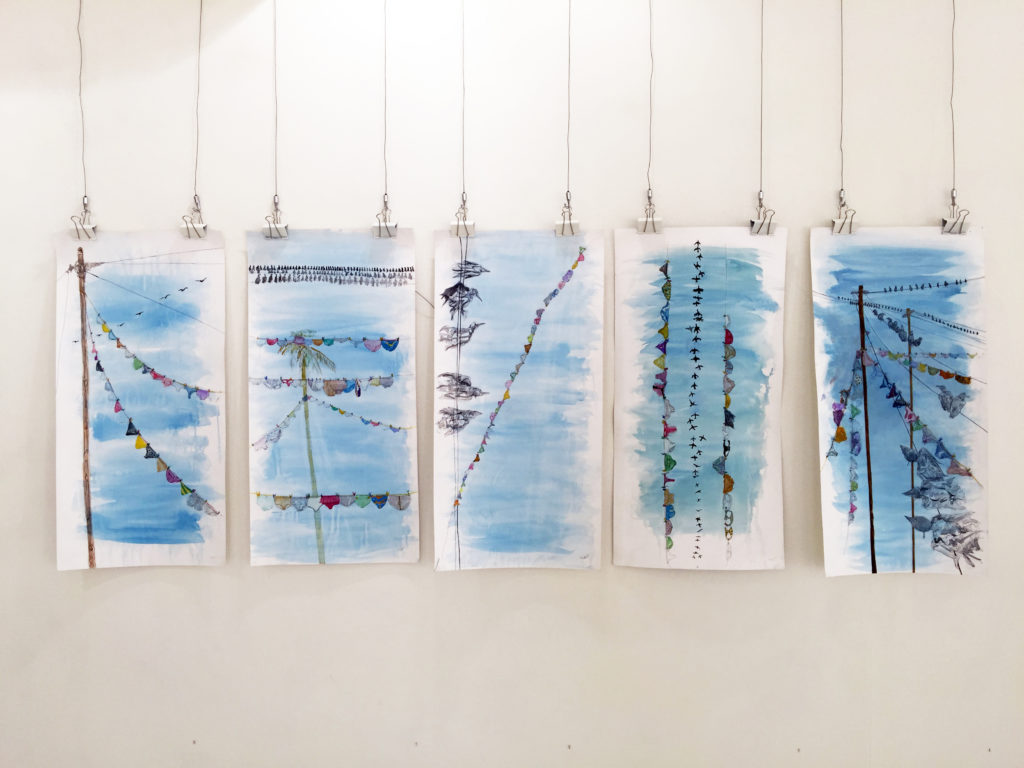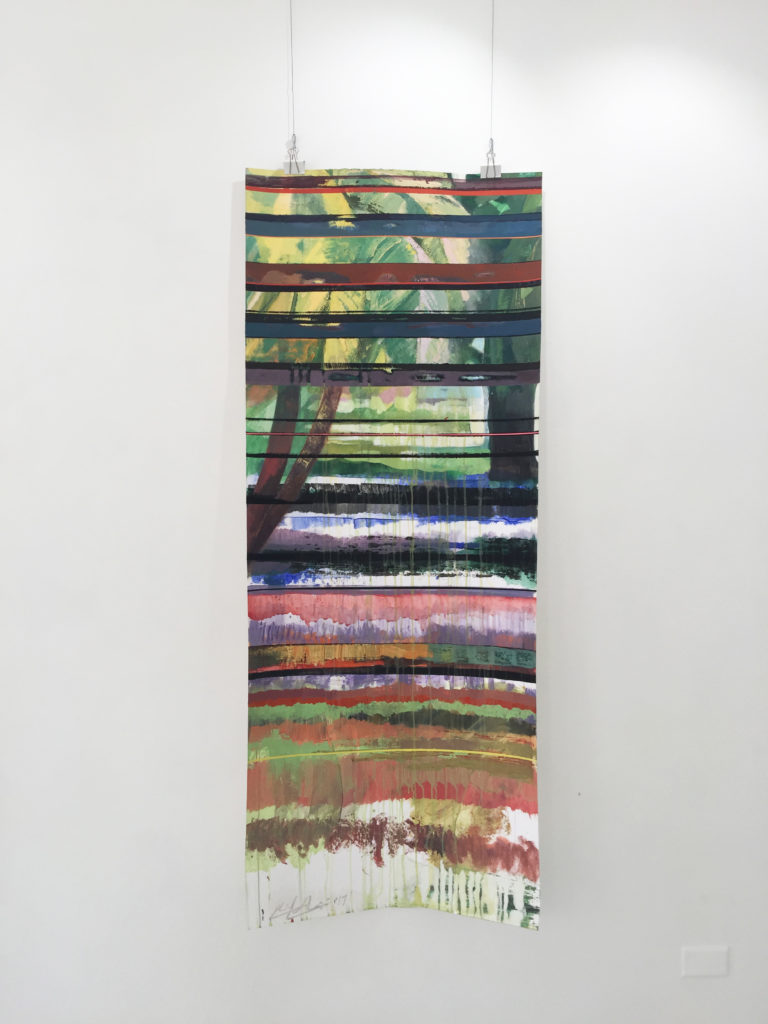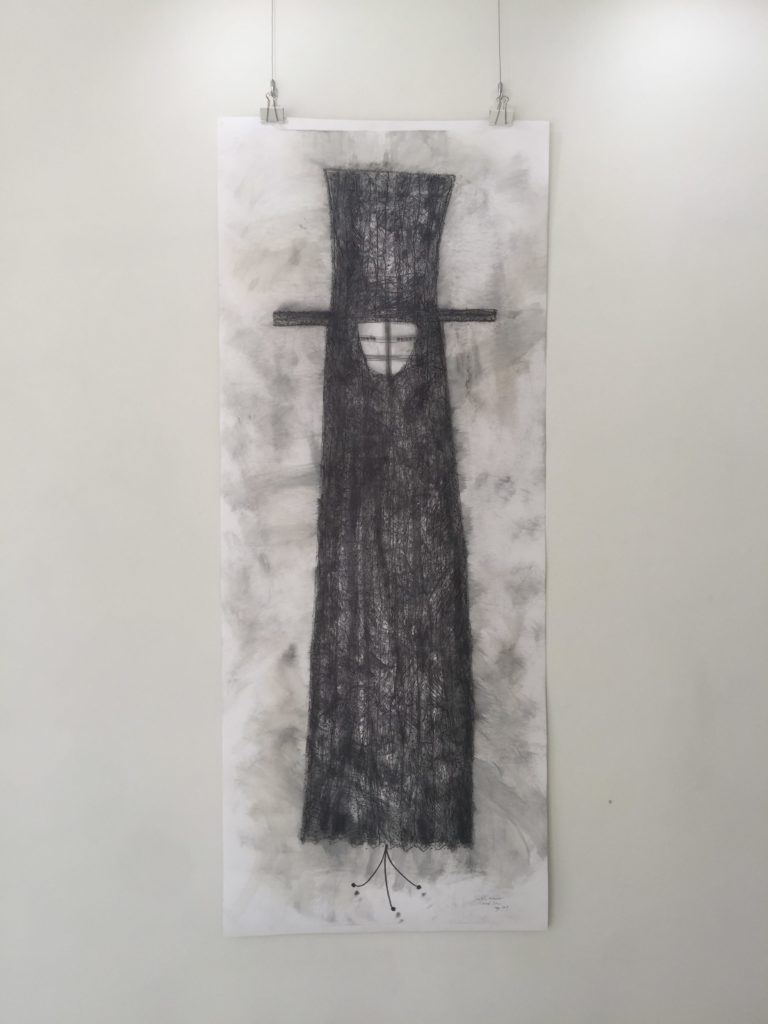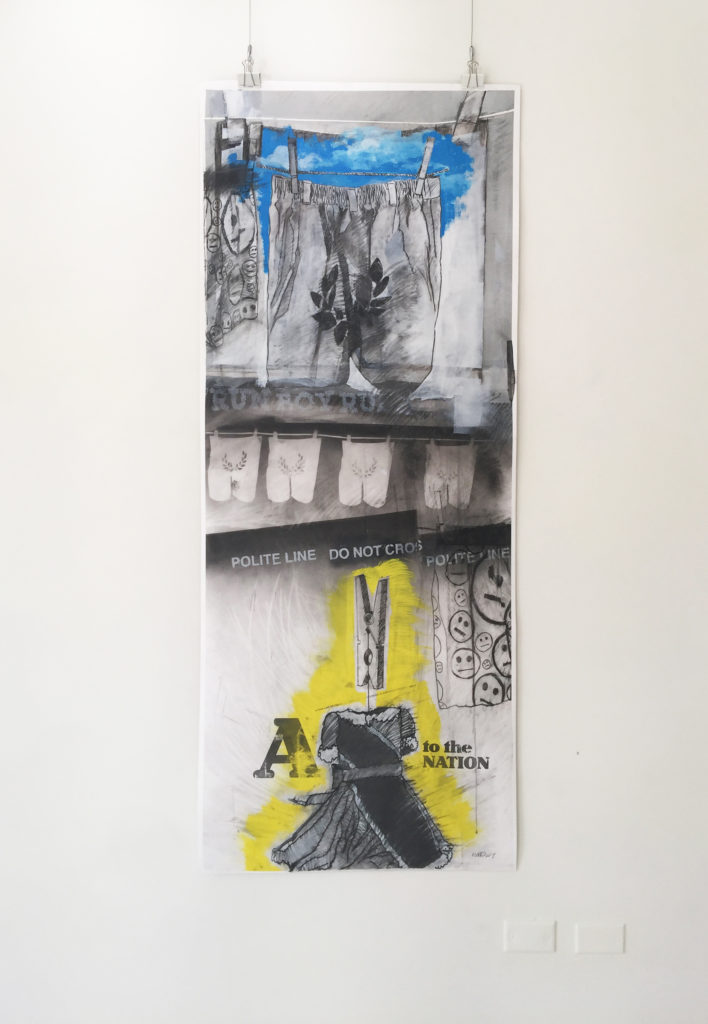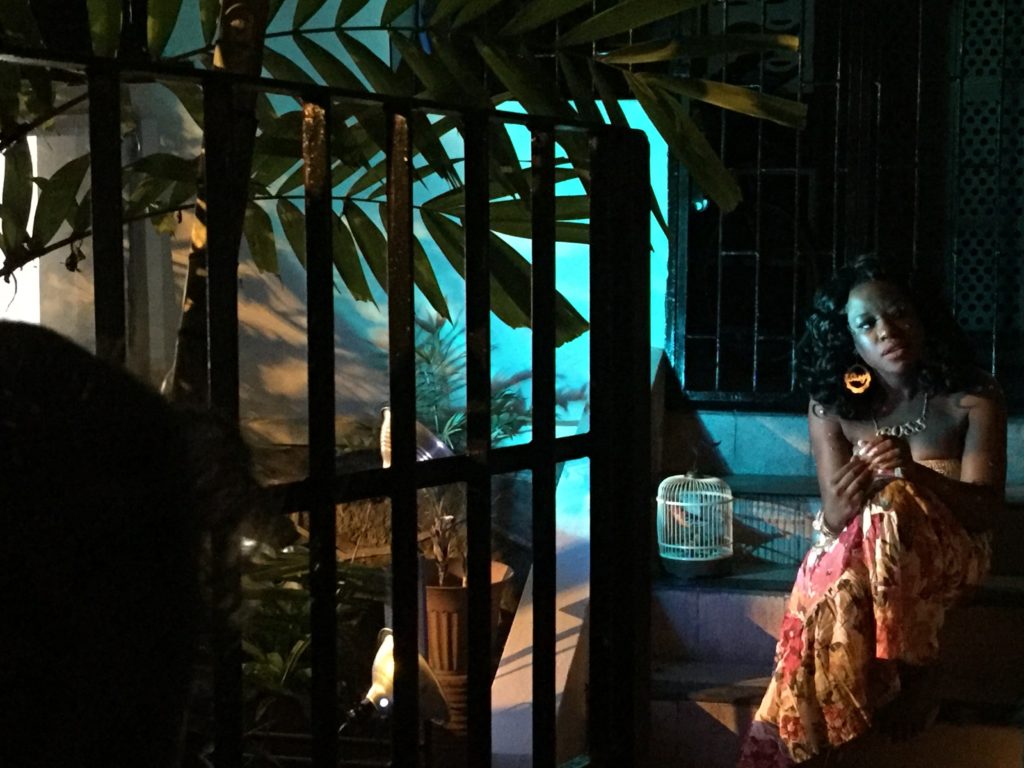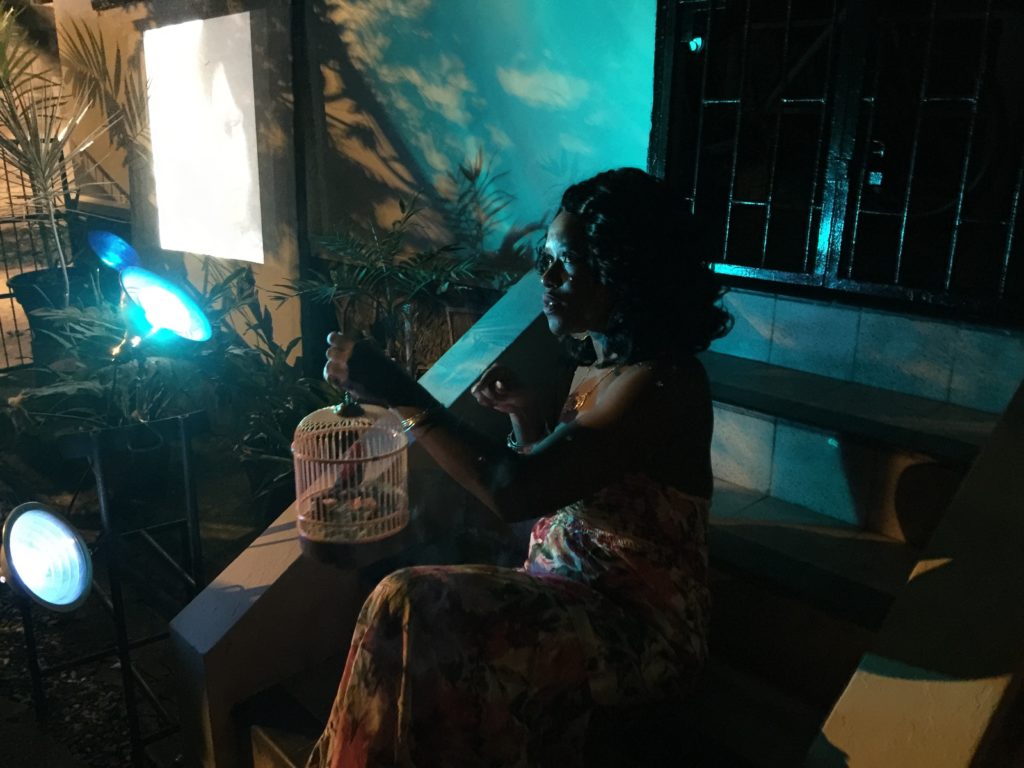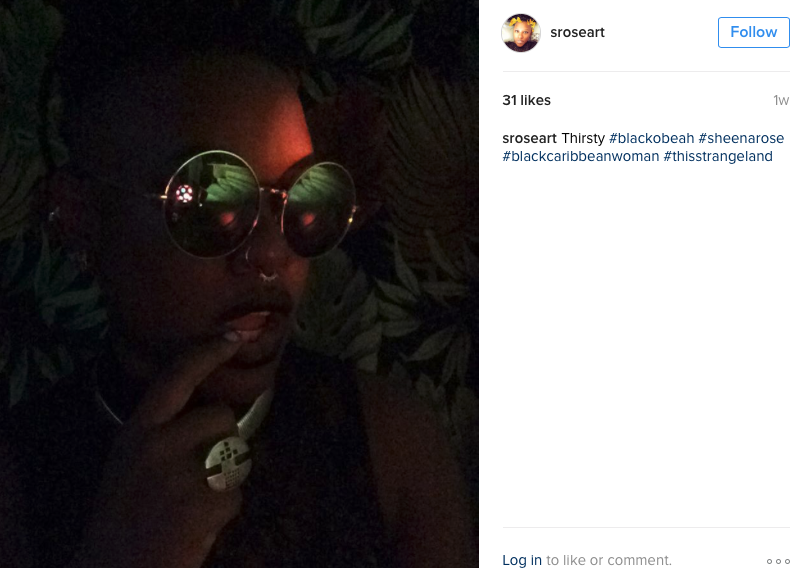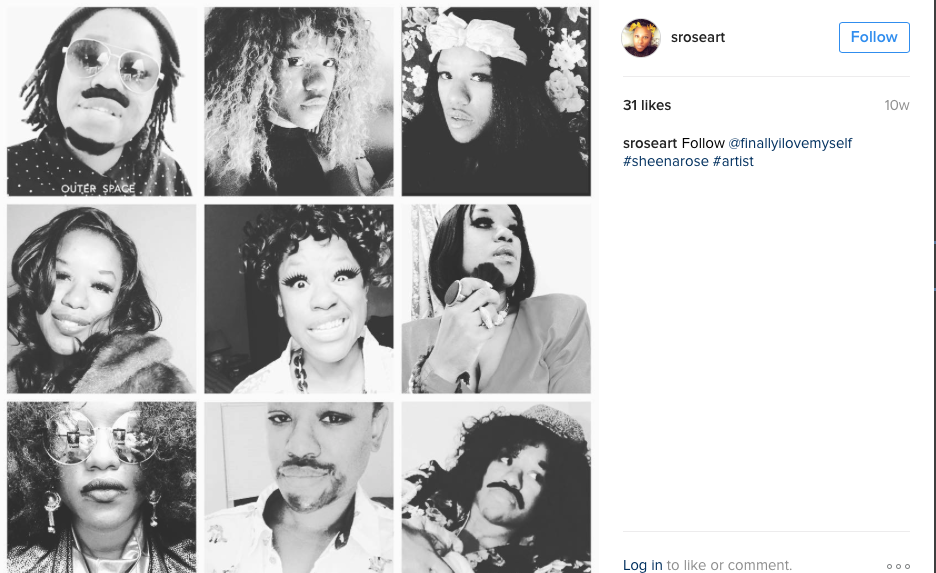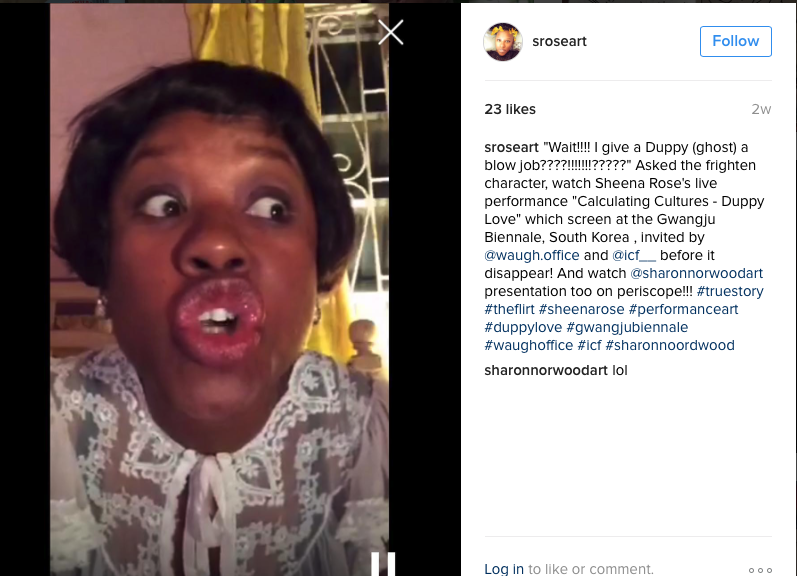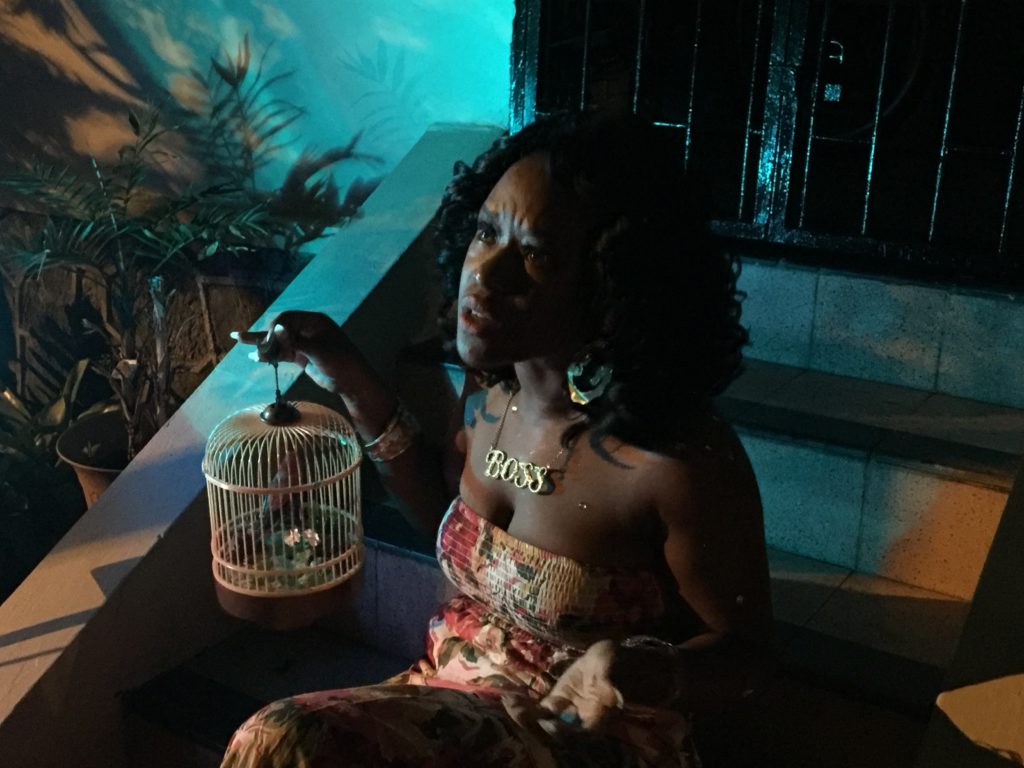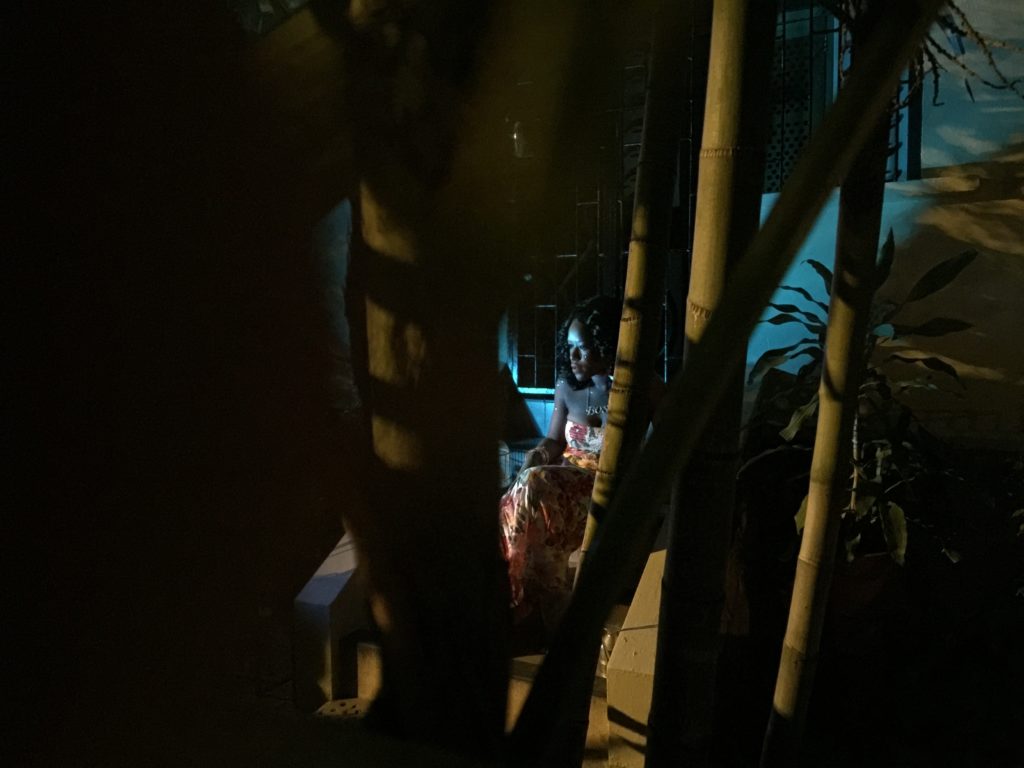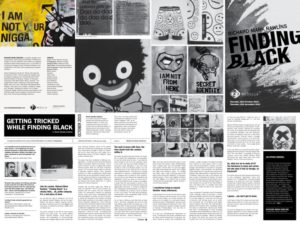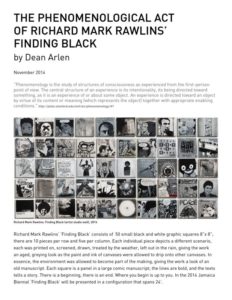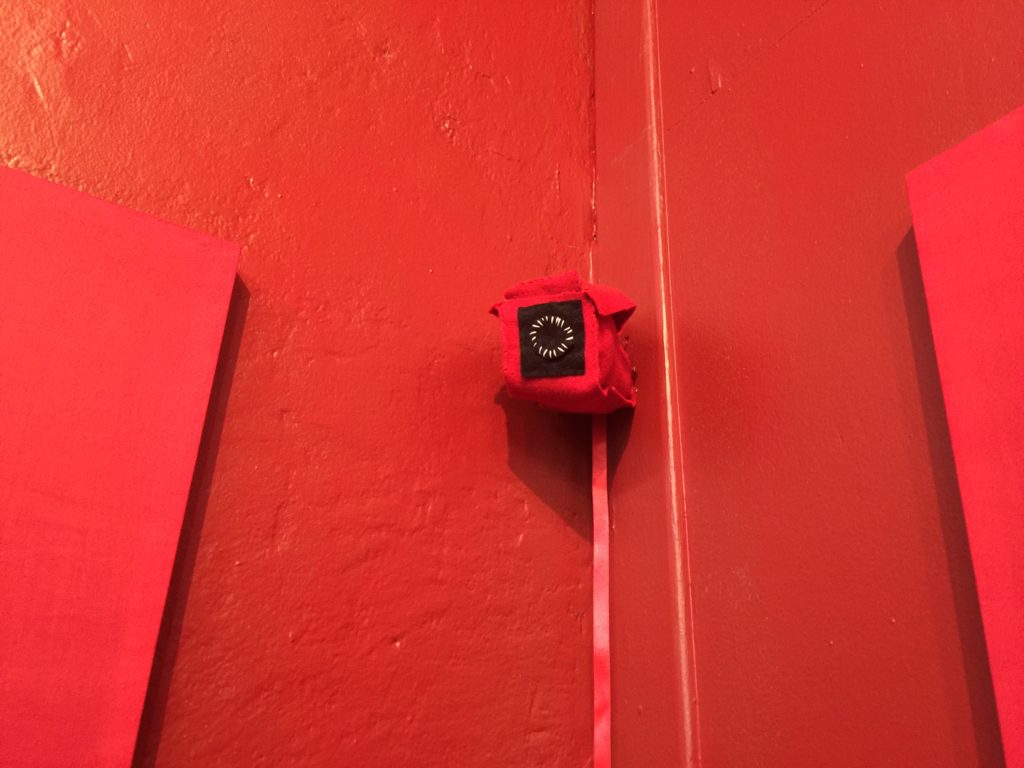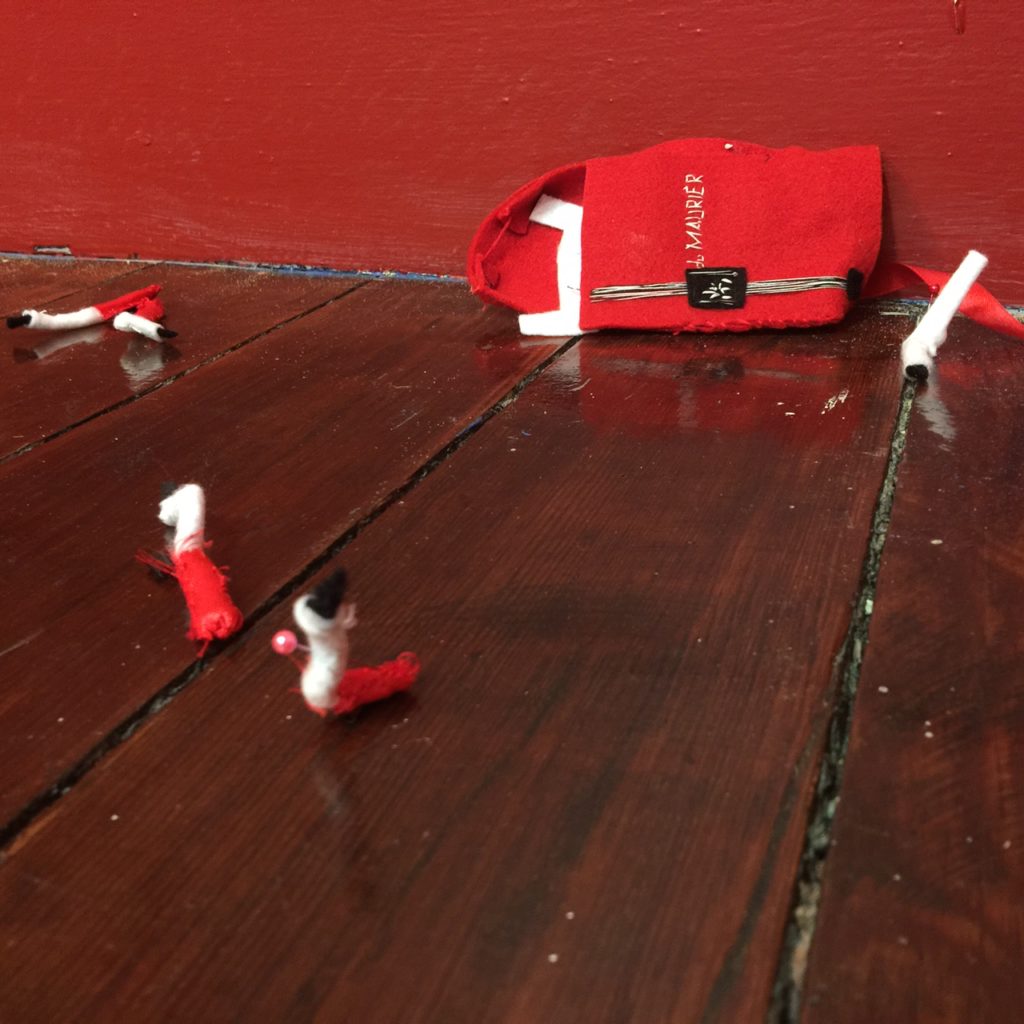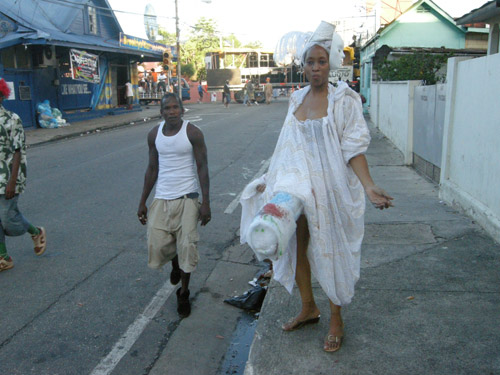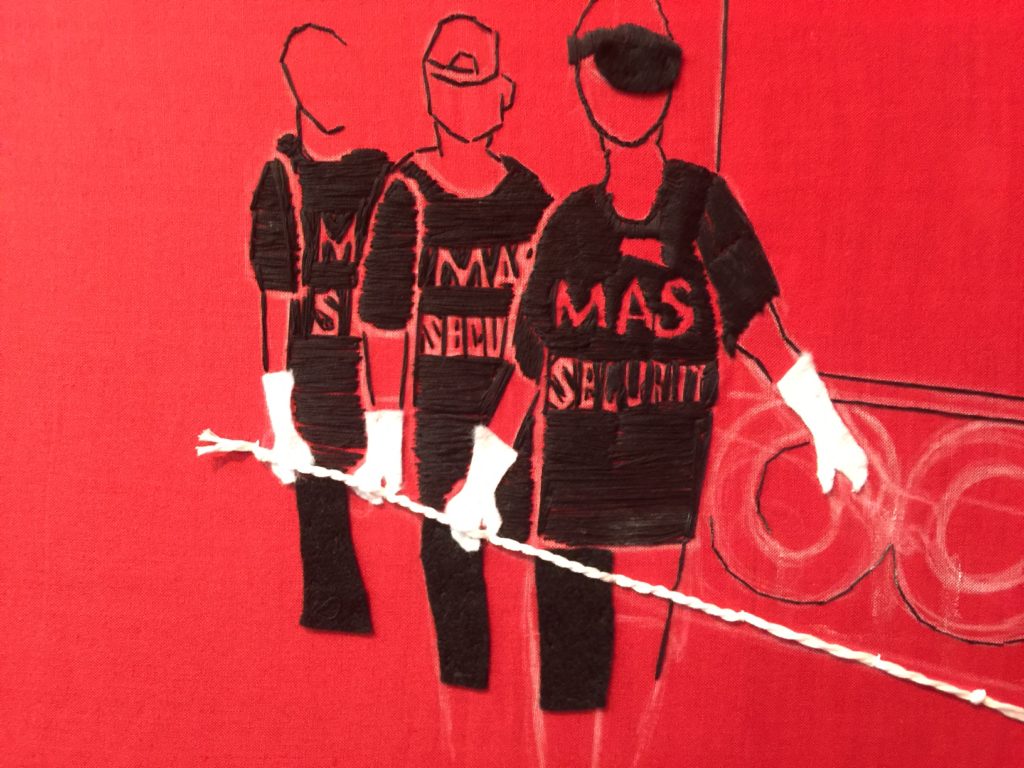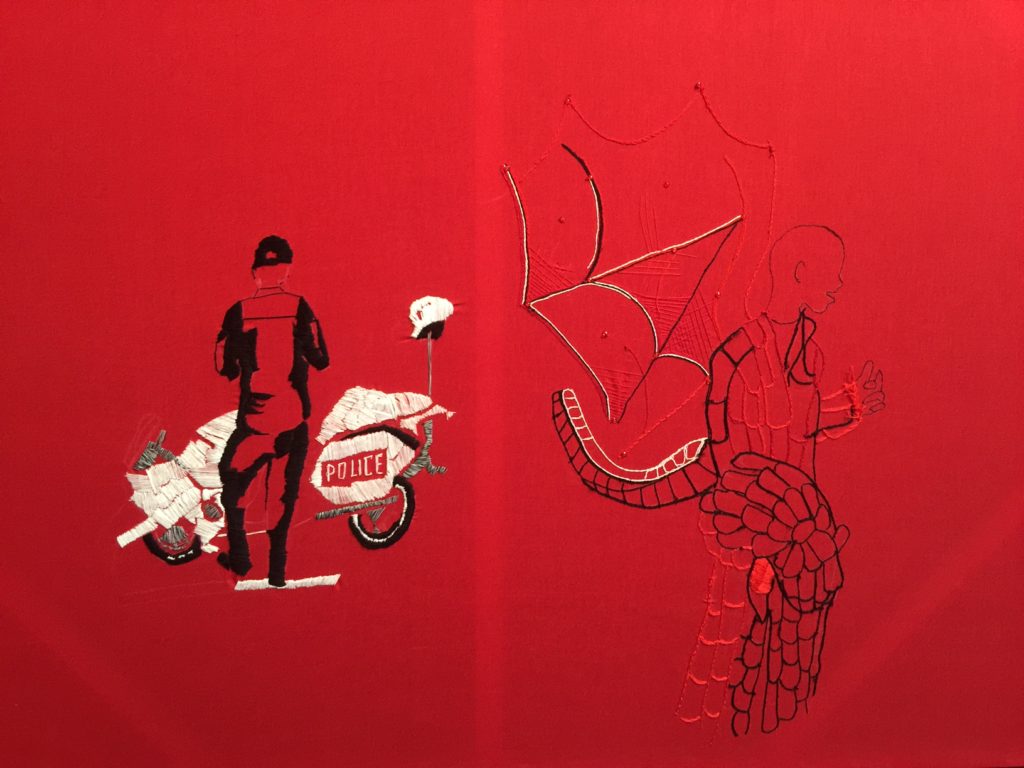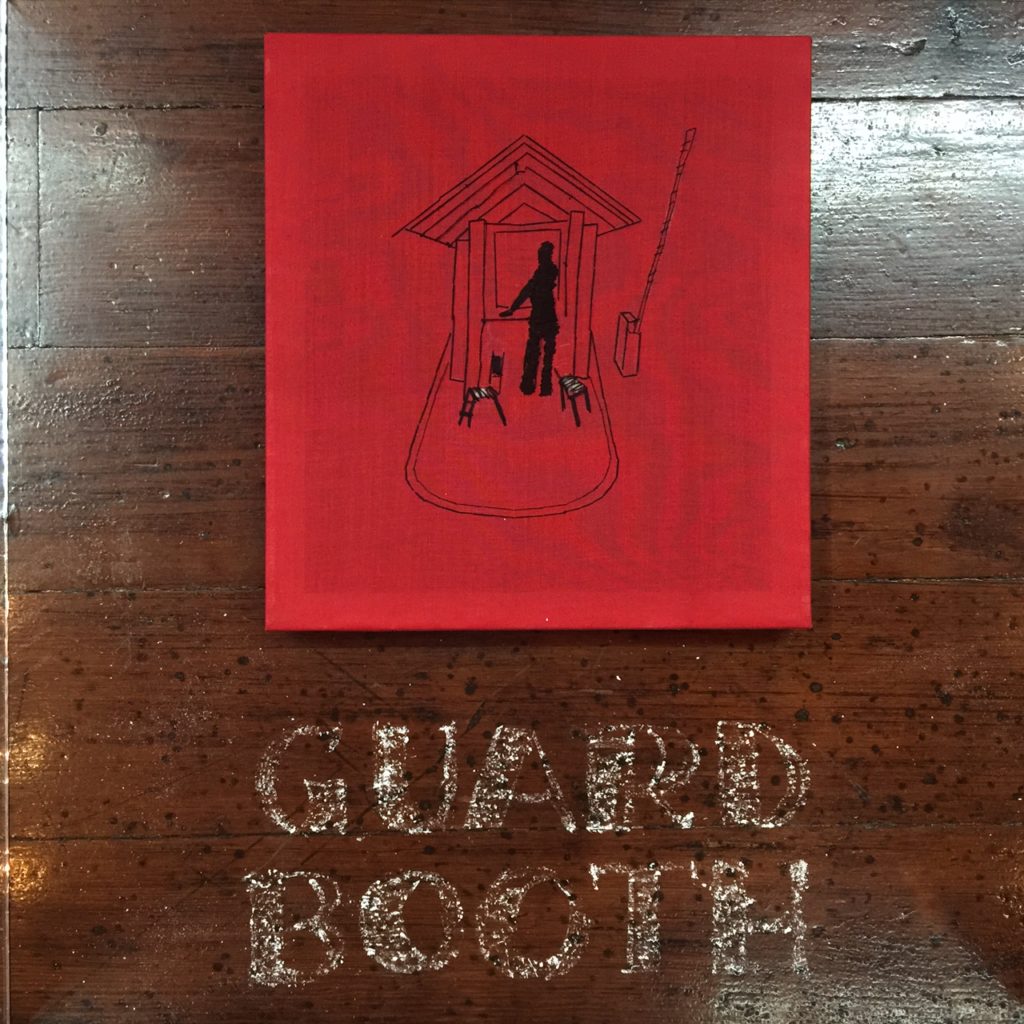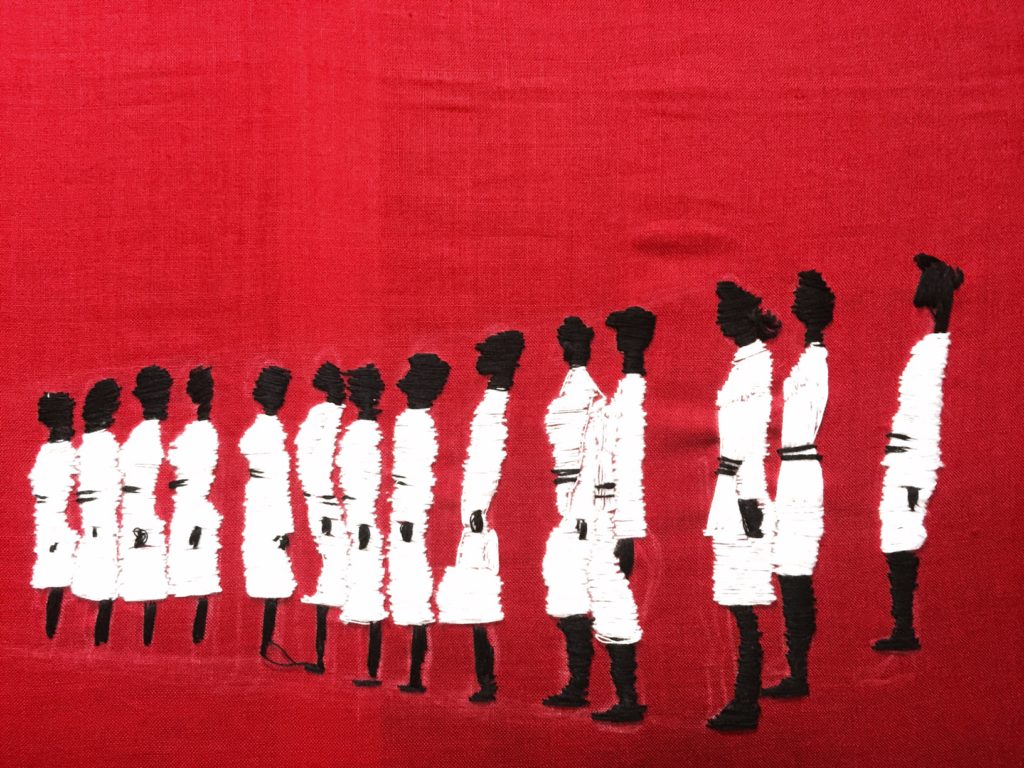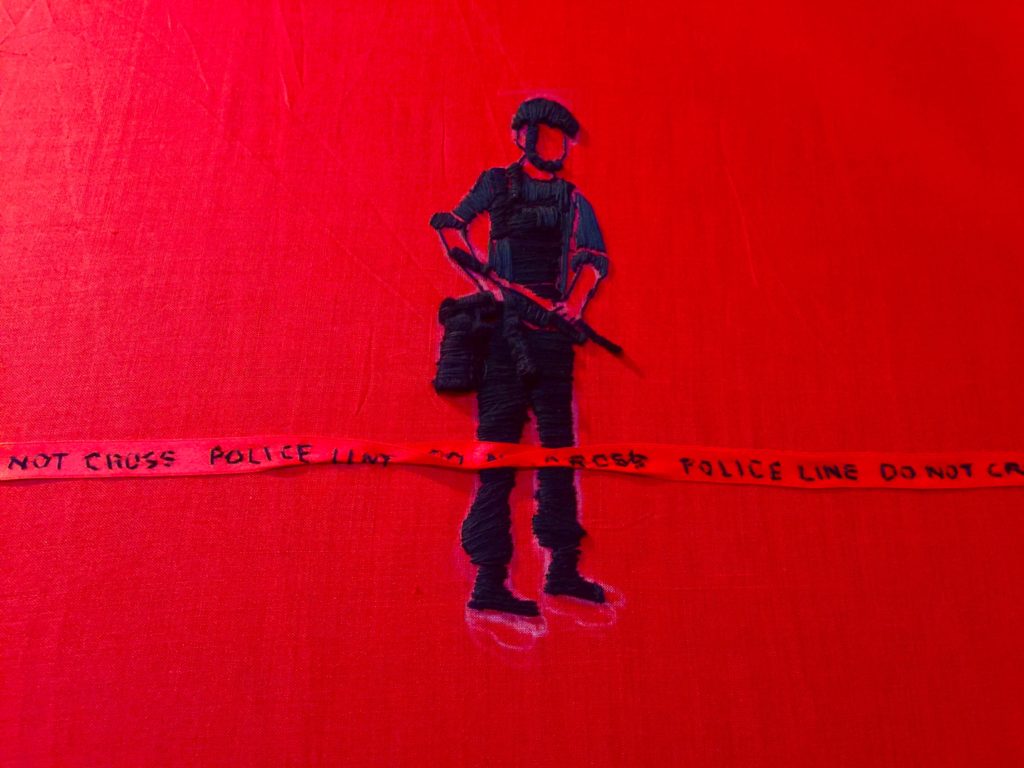by Richard M. Rawlins
All over the world, art residencies offer artists time and space in which to make work, uninterrupted by the challenges of their daily lives. They vary in length and their output depends on how an artist chooses to use his or her time and what they choose to create. For some, it may be a time for self-reflection and thinking about projects and career paths; others use the opportunity to make work in another locale and see what comes of that; some artists might begin a process of experimentation with new themes and directions. Bahamian, Blue Curry is the latest Artist in Residence (AIR), at the Alice Yard artspace on Roberts Street, Woodbrook, Port of Spain, Trinidad. Curry chose to use his Alice Yard residency to interact with and engage the wider community.
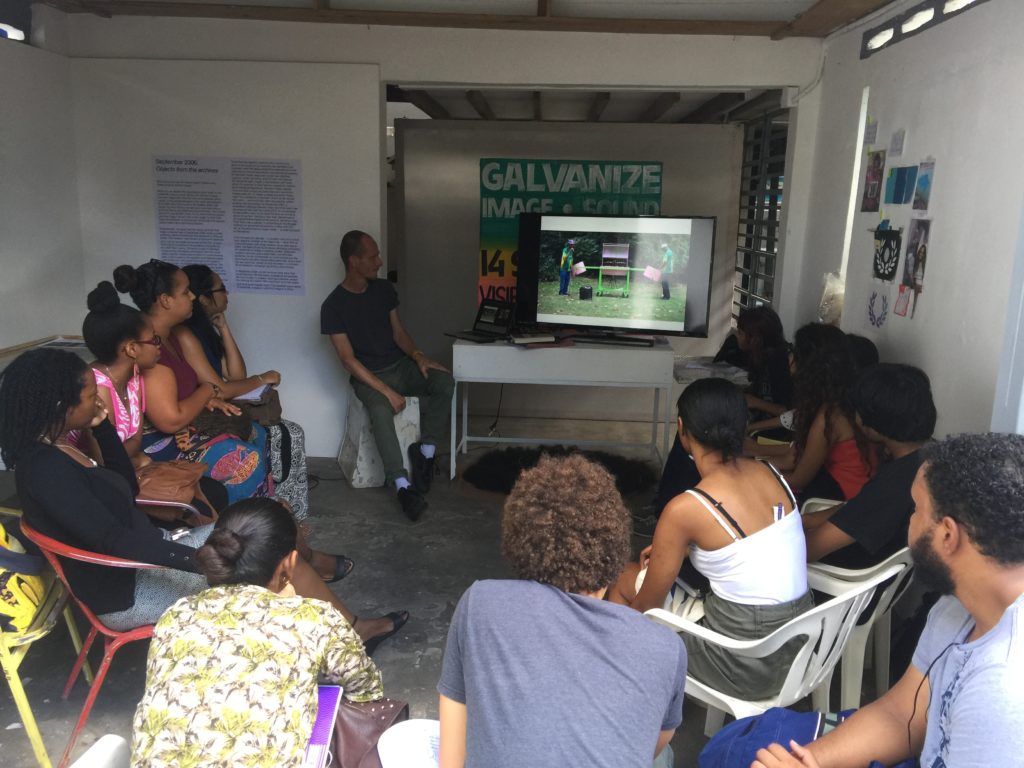
photo by RMR
In what can be described as, ‘A Marathon Affair in Trinidad’, Curry would, in a three week period, co-curate a series of artistic actions with Alice Yard’s co-director, Trinidadian artist, Christopher Cozier.
Alice Yard’s 10th anniversary ‘project X’ is a sequence of informal collaborations between various artists, who choose to engage the art space, asking questions that seek to alter the public’s relationship to artistic investigation and experimentation. As the Alice Yard blog says, “What would happen if we dislodge the artwork from traditional forms of display/encounter and locations, dismantle mythologies of sole authorship and propose the status of the art object or action as an instigative “event”?”
http://aliceyard.blogspot.com/2016/09/out-of-place.html

Curry on Charlotte Street. Photo by RMR
Curry’s ‘Marathon Affair’ started with Action #1, his mounting of Untitled, hair combs, 2013-2016 – a sculpture made of 30 plastic hair combs collected by Curry over a period of years – later moved to Charlotte Street (between Queen St and the Promenade) for one afternoon. This action in itself –moving from Alice Yard to the street – would prompt a whole series of informal engagements from passersby and Curry’s temporary street-bustling contemporaries. One such engagement involved a young woman who, rather intrigued by Curry’s ‘combs’, got stuck in a ‘time distortion loop’ of an inquiry of what the project was, what was the price and why she could not buy:
Woman 1: How much for dem comb?
Curry: They aren’t for sale. It’s an art project.
Woman 1: It’s an art project. It’s not for sale. I don’t see no price.
Curry: Well, they are not for sale. It’s an art project.
Woman 1: Oh, it’s an art project. It’s not for sale. So why I can’t buy a comb?
Curry: Well, they are not for sale. It’s an art project.
Woman 1: Oh, it’s an art project. It’s not for sale. So I could get a sample?
Curry: Well they are not for sale. It’s an art project…
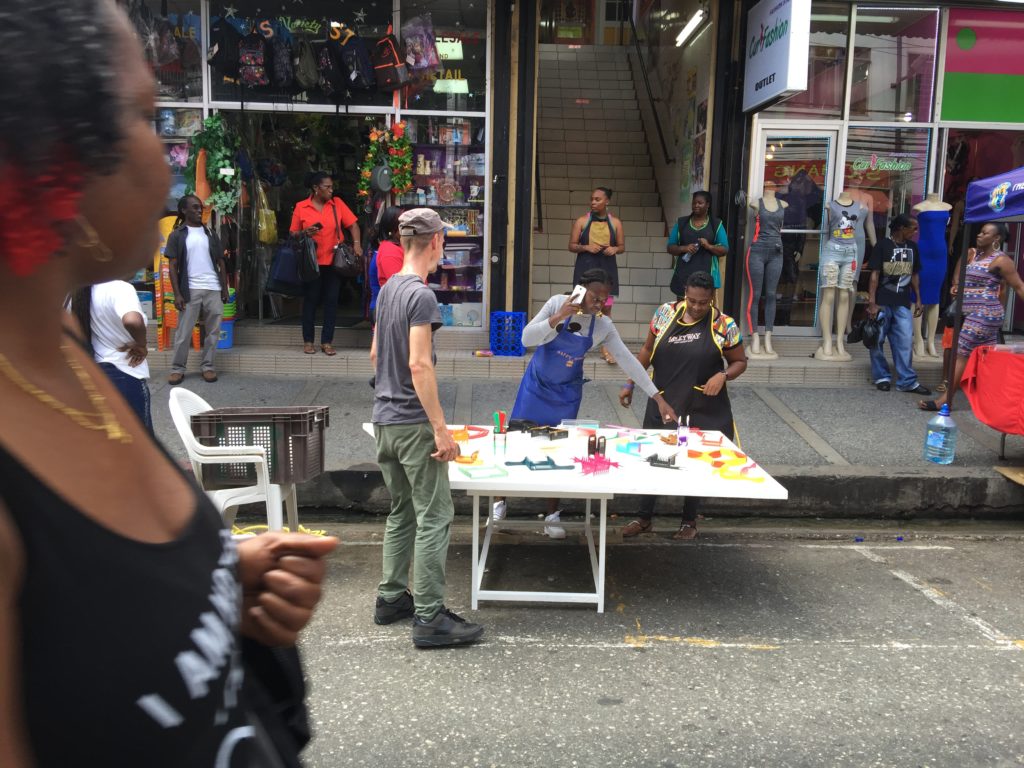
photo by RMR
Another of Curry’s ‘temporary’ street-bustling peers, would take another approach. On realizing the combs were not for sale and that they were being photographed by the artist and I, she sought to engage with the artist himself and not the art.
Girl #2: So allyuh real taking pictures!
Curry: Yes, just documenting the work.
Girl #2: So allyuh come out here to take a set of pictures? Hmmm. Well why you don’t take a set of pictures of me up in the Savannah feeling sexy, eh?
Curry: [Place speechless thought bubble right here!]
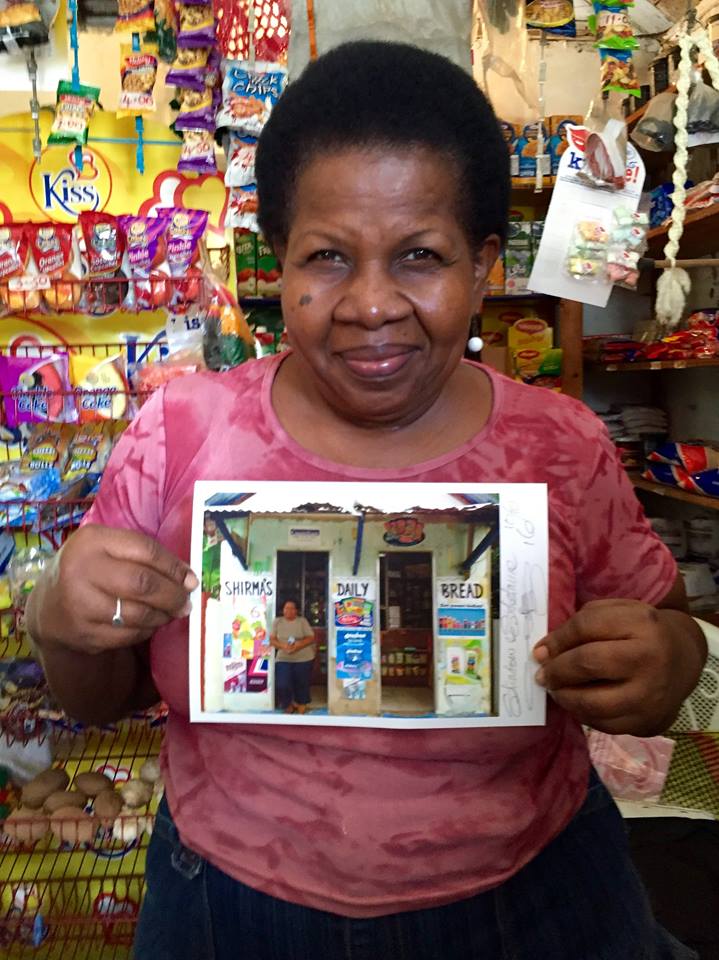
Shadow and Substance, Christopher Cozier, Blue Curry. Shirma by Nadia Huggins
Curry’s other actions would engage other artists in less lascivious ways. He and artists Cozier and Trinidadian artist, Nadia Huggins would engage a shopkeeper, Shirma, of Shirma’s Daily Bread at 85 Norfolk Street, Belmont, for Action #2, “Shadow & Substance”, an exploration of the political economy of people as images. For this action, Shirma would become the subject of the image, her shop the gallery housing the image, and she the seller of the image at a price only she could determine. Shirma’s last words on this project were: ‘No cheque eh… they does bounce all over the place.’

Bird Story, Sheena Rose. Photo by RMR
Action #3, an impromptu performance, would see Barbadian artist, Sheena Rose, performing ‘A Bird Story’, on the front steps of the restaurant adjoining Alice Yard. From her perch, with bird in hand, Rose extolled the woes and virtues of being a kept bird in a cage, and the “intense, intimate relationship” with a guy who is drawn to her state of “constant agitation” at being caged and minded…

Mixed Blues Abstraction, James Cooper. Photo RMR
Action #4, Mixed Blues Abstraction by Bermudian artist, James Cooper. This work, sent long distance via instructions from Bermuda, saw Curry and Trinidadian designer Kriston Chen out at 5am on Woodbrook’s boundary line, painting out some rain-faded graffiti with a mix of two shades of blue named after the Bahamas and Bermuda. Taking its basic aesthetic inspiration from graffiti that has been ‘cleaned up’ or ‘blocked out’ by authorities, Curry and Chen, as instructed by Cooper, emulated this blocking pattern and created an abstract work in a public place.
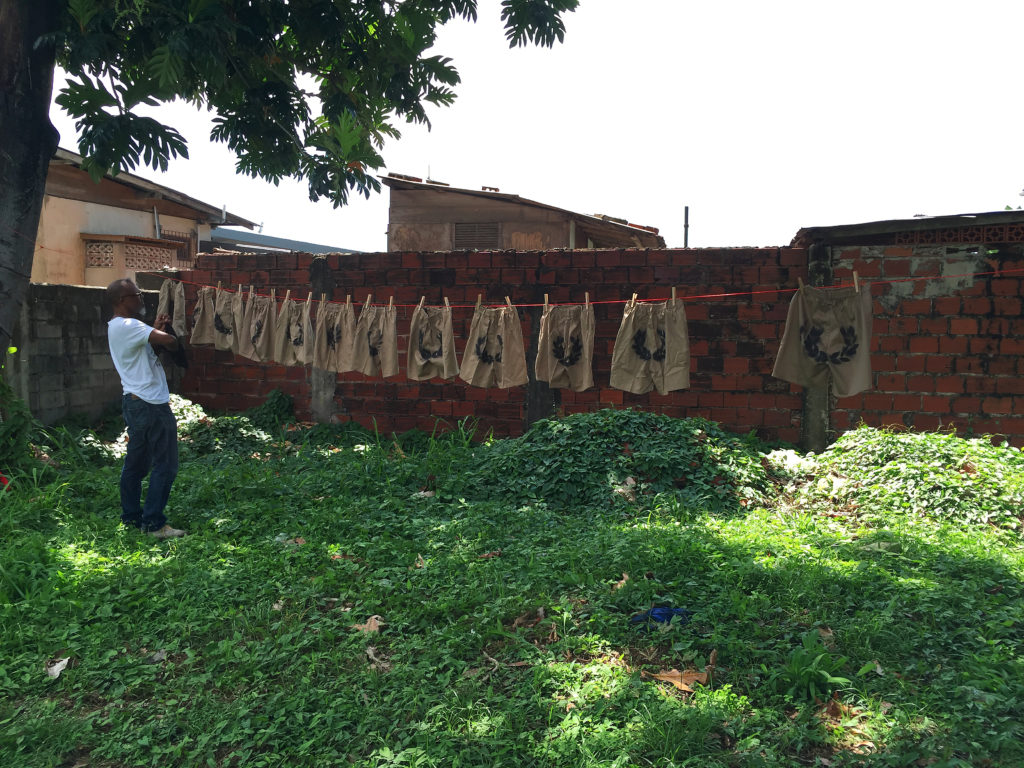
Resting on our laurels Version 1, Richard M. Rawlins. Photo by Blue Curry
Action #5, Resting on our Laurels, Version 1, consisting of 12 Prince and Oxford Style 0019 size 14 khaki school pants, spray paint, orange clothes line, 24 clothes pins, one mango tree and one breadfruit tree. Situated on an empty lot at the bottom of Ana Street, Woodbrook, I made this work as a social commentary on the way we utilize the knowledge that we gain in school. We are taught all these wonderful subjects, inclusive of the sciences, and of course social studies, but when we get around to being adults and administrators of our society, that education goes out the window – we go for the immediate, most compliable and often ‘doltish’ solutions to problems. So each day is the same ‘khaki pants’ in a sense.
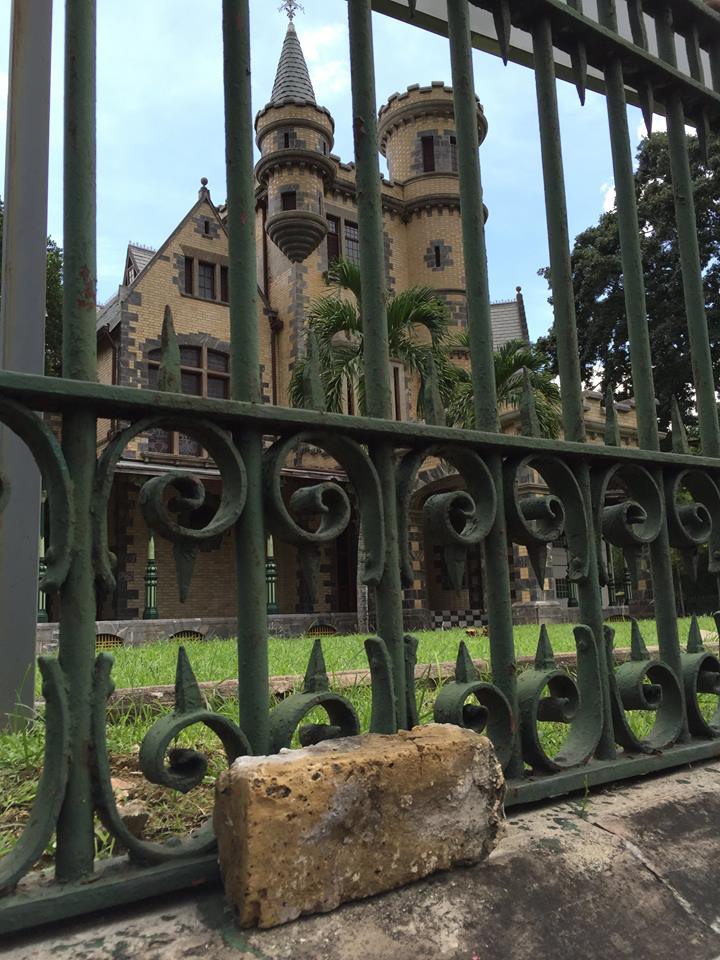
British Ballast, Tamara Cruickshank. Photo by the artist.
Action #6, British Ballast by Trinidadian artist Tamara Tam-Cruickshank. Cruickshank carried ballast bricks ( whatever that could fit) in her backpack from Lapeyrouse Cemetery (where she found them) to Alice Yard. (Ballast bricks were used to weigh down empty ships coming from England and Scotland. The bricks were off-loaded on arrival in the colonies to make way for the cargo (sugar, coffee, etc) which was being sent back to Europe.) Cruickshank took pictures of the bricks then moved them again, further displacing them, to different heritage sites around Port of Spain. According to Cruickshank, she was, “Seeking to make a visual connection between the journey and the predicament of these bricks and these sites… A subtle way of conceptualizing, visually, the existing material culture in the city. Questioning our perpetuation and celebration of the colonial presence and heritage.”
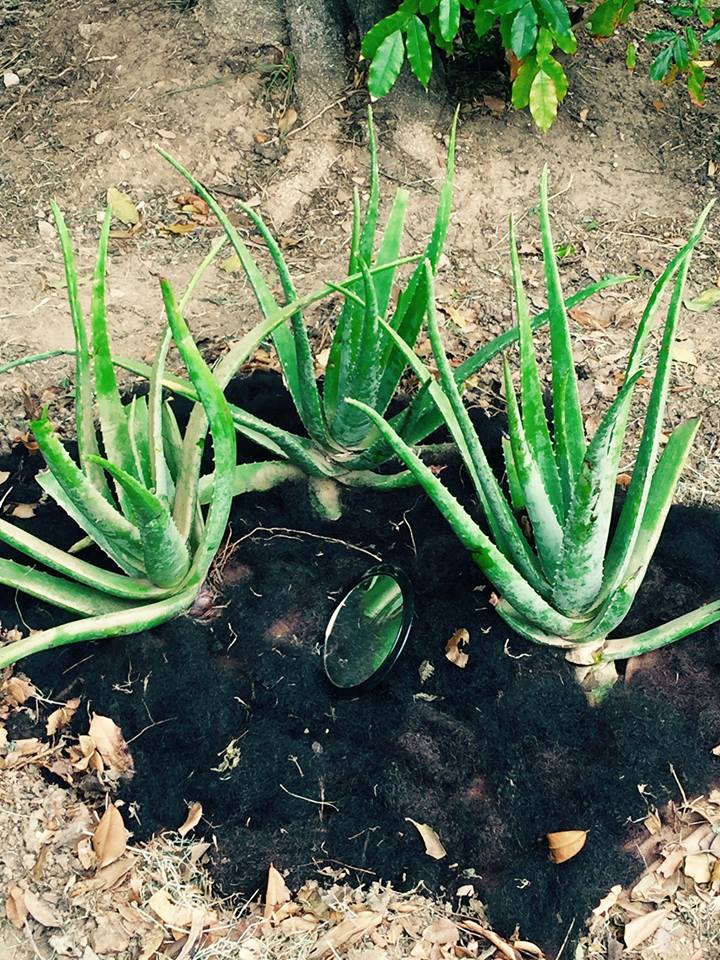
Untitled, Deborah M. Caroll Anzinger. Photo by RMR
Action #7, Untitled, by Jamaican artist, Deborah M. Caroll Anzinger. Again, long-distance instructions were sent to Blue Curry, who enlisted several people (Alice Yard co-director, architect, Sean Leonard, Trinidadian artist, Shanice Gonzales and I) to help him assemble Anzinger’s piece. Untitled is a synthetic hair, fabric, aloe plants, mirror sculpture that re-conceptualizes power, gender and other social relations. According to Anzinger, “Not least social penetration and reconfiguring. The penetrated is the penetrator, the observer is observed. Everything must negotiate: Living organism with synthetic substance, the imagined with the real, subject and object, the self and other.” Assembling the piece involved the heavy kneading of dough by Gonzales, the acquiring of copious amounts of ‘hair weave extensions’ by Curry, and alas, Leonard and I camouflaged as ‘yard boys’, digging up and mounting the piece in a public place on Tragarete Road.
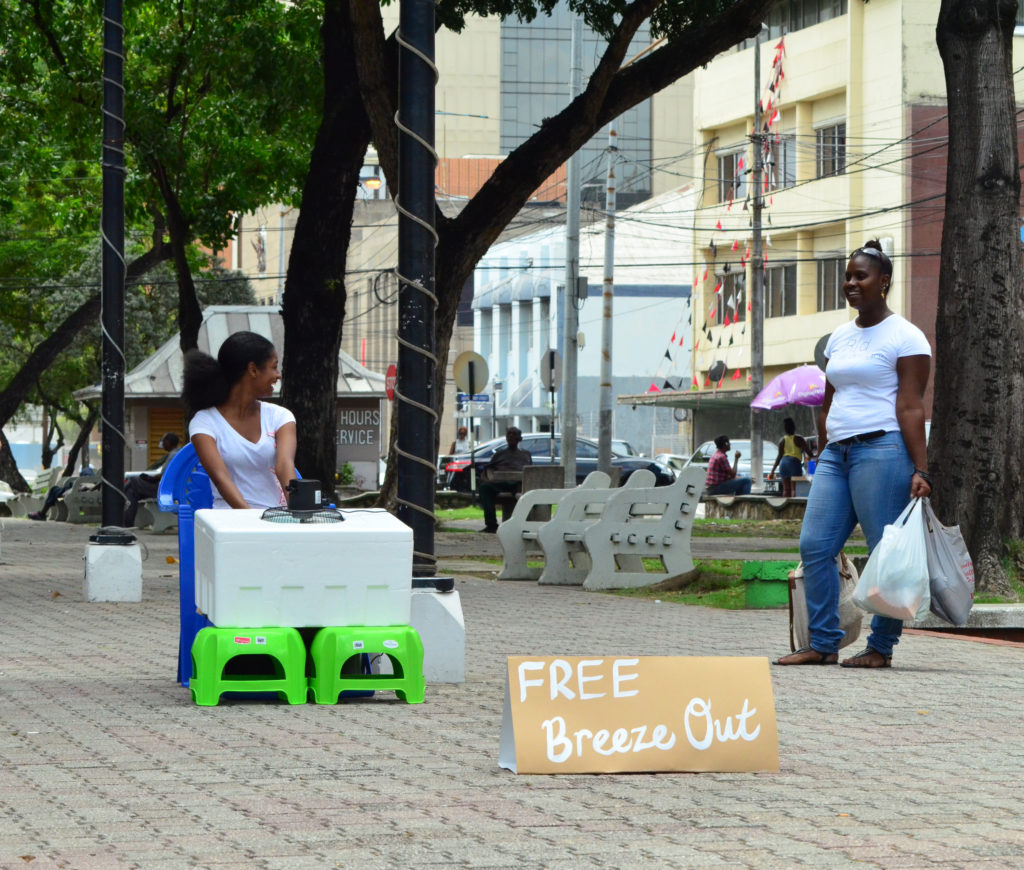
Cool o Breeze o, Alicia Milne. Photo by Luis Vasquez.
Action #8, Trinidadian artist Alicia Milne’s work ‘Cool o Breeze o’, was a playful public gesture that utilized very familiar everyday objects (styrofoam cooler, ice, salt, pvc, a fan and plastic chair). to offer a free “breeze out” (cool down/breeze out) to passersby. The project operated from 10am-2pm on a bright and sunny Saturday at the Brian Lara Promenade.
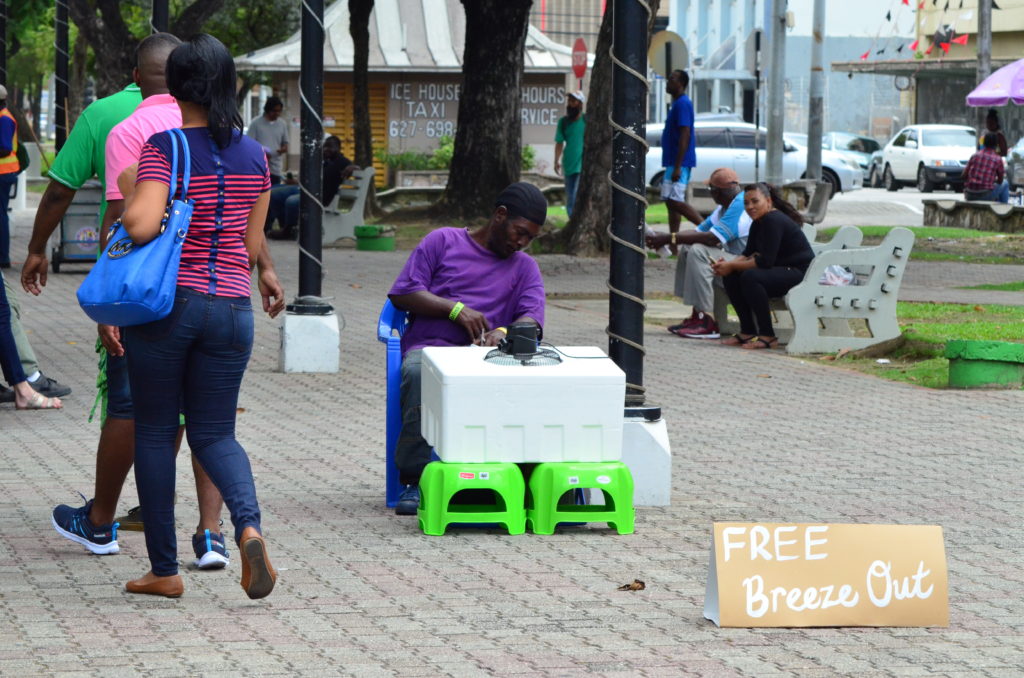
Cool o Breeze o, Alicia Milne. Photo by Luis Vasquez.
One amused passerby said: …yeah I could see dat’ I like that, I could see me using that at night oui, when it hot. Allyou come good there. Milne’s ingenious, low-cost air condition is a styrotex box filled with ice and fitted with a cheap ‘made in China’ fan that pumps air through the cold box and out two pvc angled pipes to create fresh cool air.
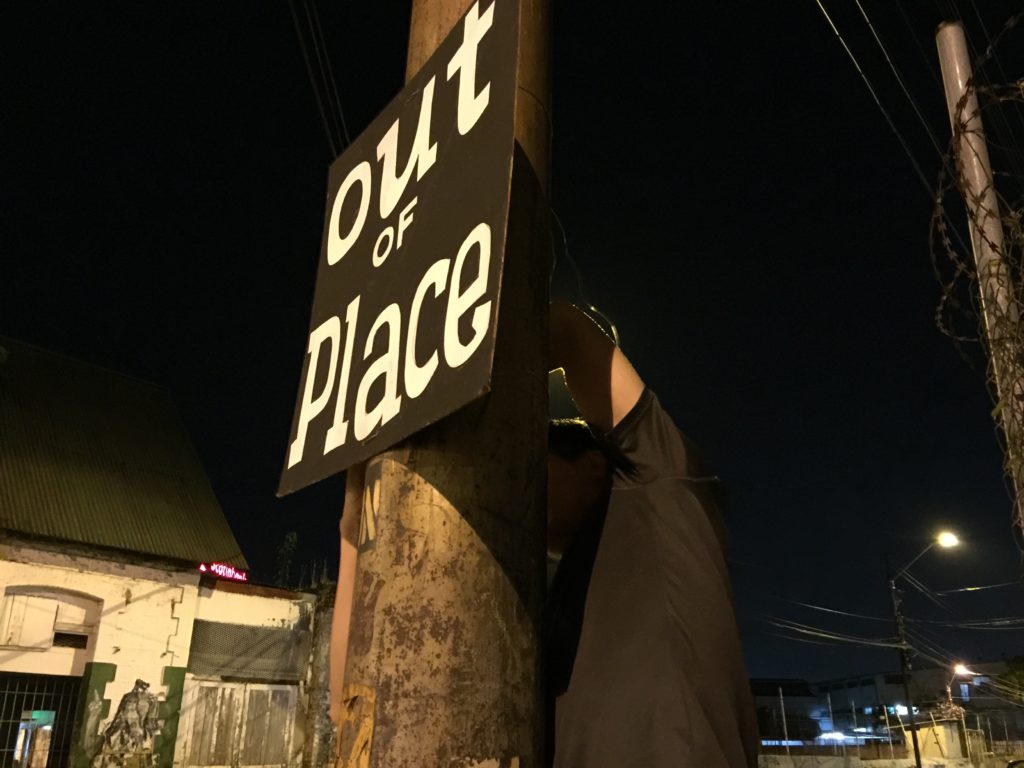
OUT OF PLACE, Bruce Cayonne. Photo by RMR
Action #9, OUT OF PLACE. Trinidadian sign man, Bruce Cayonne from Arima, engaged projectX via the provision of 20 black-and-white fete style signs bearing the project’s name: Out of Place, Cayonne’s work is well known on the fete circuit and to the wider public: his fete signage is ubiquitous. In Out of Place, Cayonne “worked against the usual colourful aesthetic of the fete signs and [went] completely monochrome. Cayonne painted these works in a way he has not done before, in reverse, filling in the positive space with black paint to create the lettering from the white background.
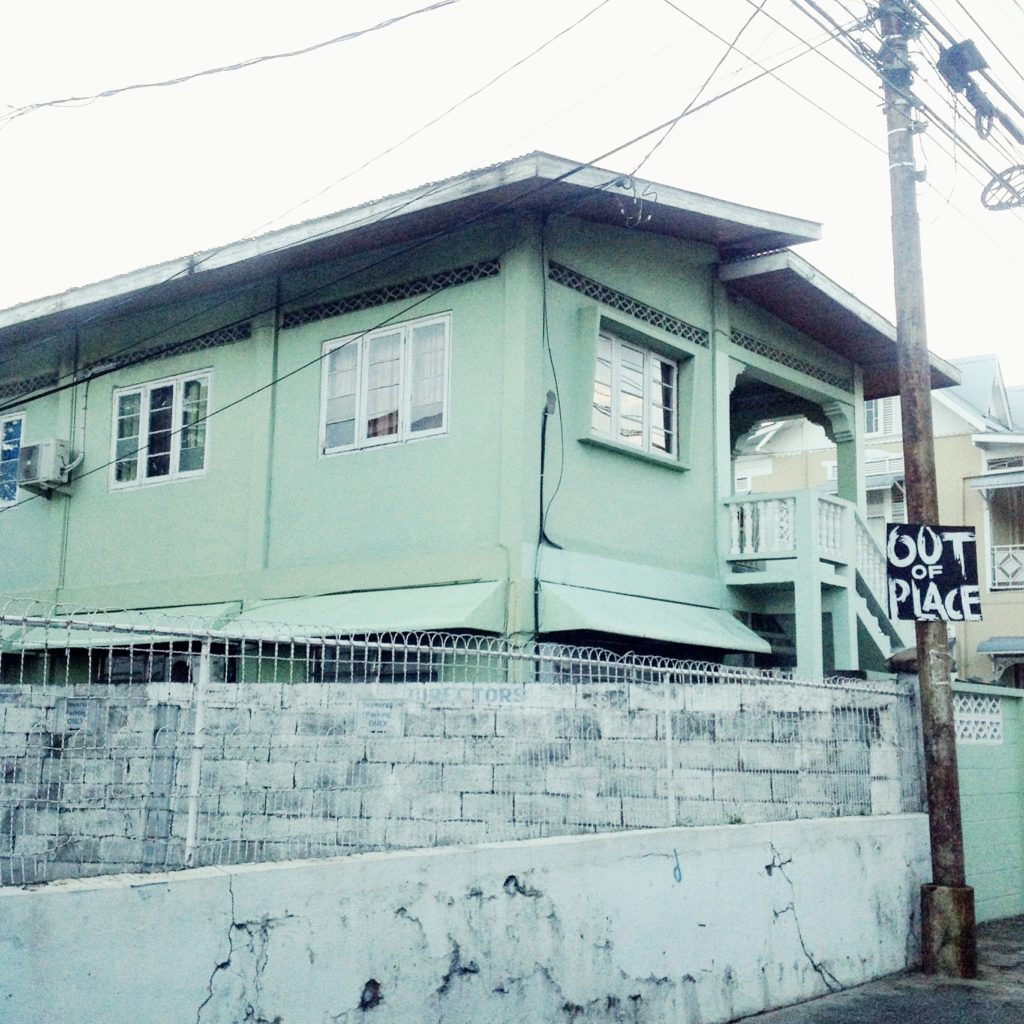
OUT OF PLACE, Bruce Cayonne. Photo by Kriston Chen
For him this opens up new possibilities of pushing text beyond the limits of the edges of the pressed wood sign-board. Trying it out, as a way to slow down the quick delivery of information that is expected of his work, each sign is unique.” Among Cayonne’s instructions for sign placement were: way above head height, 3 nails down the middle for trees and wooden poles, try to put holes only in the black on the signs and hang all signs at a 45 degree angle.

The work of Clean Cutz Barber Shop. Photo by Kriston Chen
Action #10, [The Marathon within the marathon] BLUE CURRY SPECIALS – FRIDAY ONLY – PORT OF SPAIN, TRINIDAD. CATCH THEM WHILE THEY LAST! Doubles with spicy pineapple sauce. George’s Doubles, Corner or Roberts and Murray Streets. Open 6.30am-1.30pm; A Unique hair mark design, Clean Cutz Barber Shop, Belmont Circular Road between Jerningham Ave. and Erthig Road. Open 10am-5pm; $100 oil and filter change, BASE Auto Mechanic, Pelham Street between Belmont Circular and Reid Lane. Open 9am-4pm; Fried arepa topped with shredded beef, fried egg, ham, coleslaw, cheese, avocado and house dressing, Taryn’s, 23 Mucurapo Road, St James. Open 7am-5pm; $20 Cafe Latte, Perfect Cup Espresso Bar, Corner of Ariapita Ave. and Luis Street. Open 7.30am-2.30pm; Free Toothpaste with any Dental Cleaning, St. James Family Dental Clinic, #6 Jerry Street, St. James. Open 9am-4.30pm; $1 off any short drop ride, Lindley’s Taxi Service, Woodford Square, St Ann’s Taxi Stand; Mango flavoured snow cone, J&K Sno Cone, opposite Memorial Park, in front of National Museum. Open 10am-4pm; 25% off storewide, Oblique Imperative, corner of Tragarete and Maraval Roads. Open 12-10pm. (All Prices in Trinidad & Tobago Dollars).
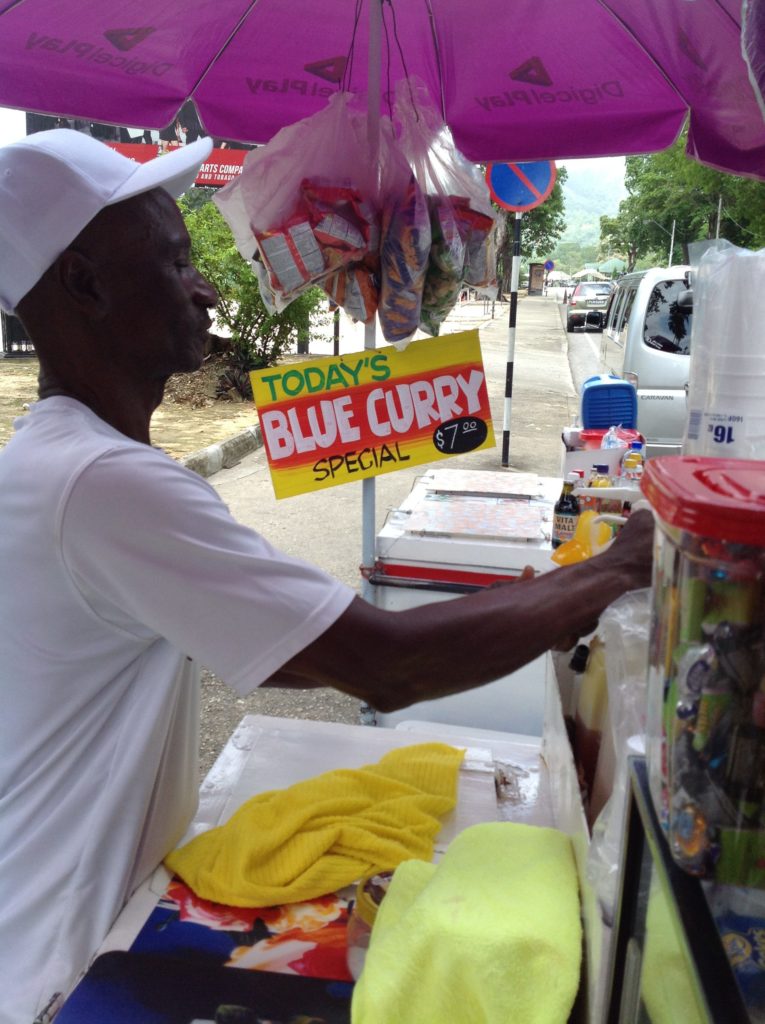
J&K Sno Cone, opposite Memorial Park. Photo by Kriston Chen
Curry created 9 actions within one action and engaged far too many people – to possibly list here – in one 8 hour period. Suffice it to say that this action would even spark a social media shout out by noted Trinidadian calypsonian David Rudder: ‘Whenever you’re in Trinidad or in Port of Spain, check Blue Curry in front of the National Museum’, as well as new Jersey artist, Nyugen Smith’s ‘a mash up’ of the George X doubles and the Taryn’s arepa.
Blue Curry specials to the world!

Untitled, Alex Kelly. Photo by RMR.
Action #11, Alex David Kelly’s, ‘Untitled’. The work – three blue oil drums stacked one on top the other, topped by a wooden palette – is, according to Kelly, “a way of visualizing the economy and our false sense of security, with the pillar of oil supporting the weight of our dependence on foreign products and foreign ideas. On close inspection it doesn’t look terribly sound and it certainly doesn’t feel like it. With today’s weather there is anxiety about whether it will collapse. It’s fate is out of my hands.”
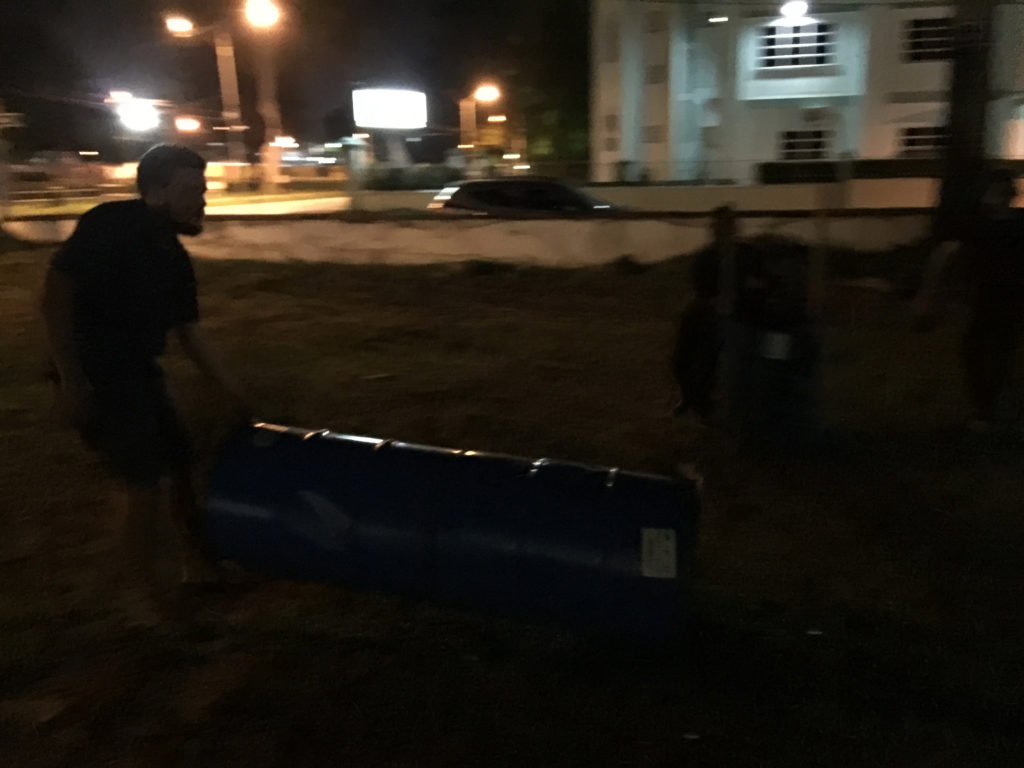
Photo by RMR.
This totem was installed like a thief in the night (at about 2am on the last day of Blue Curry’s residency) at an empty lot just south of the Queen’s Park Savannah and east of Cipriani Boulevard. It presents us with an inversion of an ‘oil rich culture’. Do we as a nation, as the inversion suggests, do things ‘ass-backwards’? Is this totem to oil and gas a signpost of what is to come in our recession-filled years? The piece stands there smack dab in the center of that lot like one of Arthur C. Clarke‘s Space Odyssey series’ monoliths. Much like the monoliths one day it wasn’t there and then all of a sudden it was there. When we approach, when we touch it, will we be imbued with the knowledge necessary to get out of our economic quagmire?
Sunday after we erected the totem, I went back to the site to take some daylight photographs. There were two construction workers from an adjacent work site, observing cautiously…
Man 1: Where that come from?
Man 2: Me eh know, but I not touching no obeah thing nuh…
Then, like the man upstairs, on the seventh day, Curry rested and got on a flight headed for the Dominican Republic, having been integral to sparking a sequence of events and interactions that will continue its explorative path for the next year. Yep. There’s more to come…
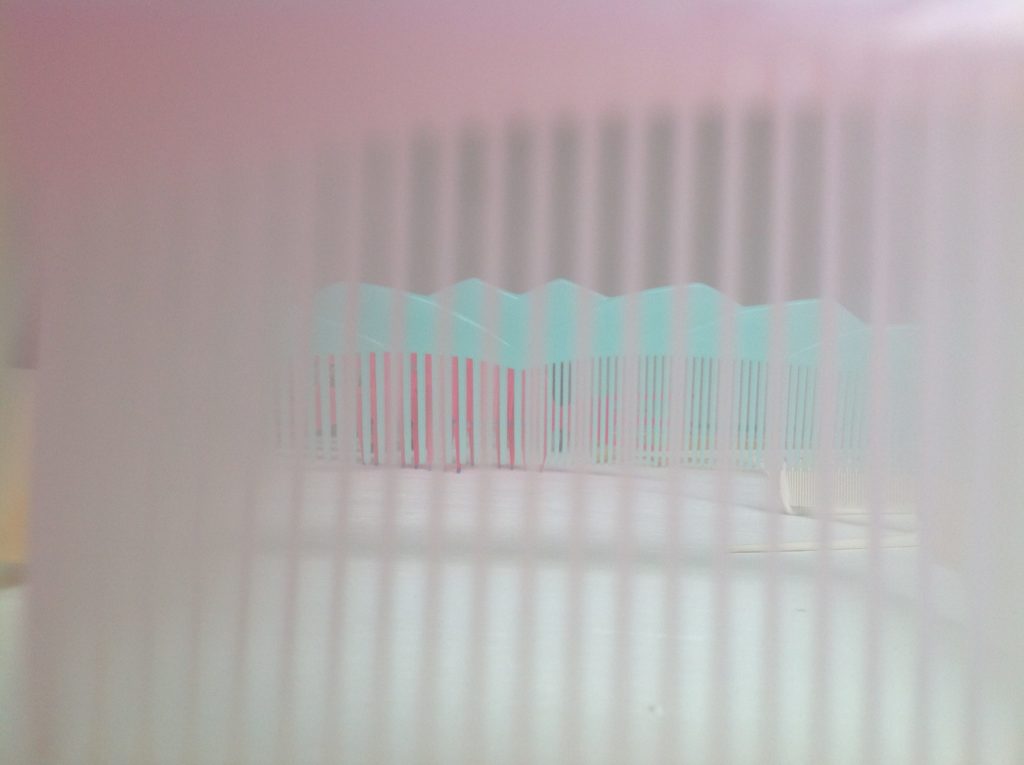
Photo by Kriston Chen
Postmark:
Untitled, Alice Yard Residency, Blue Curry, 2016, 14 artists, 1 architect, 1 sign man, 4 graphic designers, a spirit of experimentation, 30 combs, 11 business proprieters, 1 DCFA class and lecturer, 1 carpenter, 2 truck transports, a lack of overthinking, 30 signs, hair weave, oil drums, flour, khaki pants, clothes line, 2 tins of spray paint, 2 gallons of blue paint, clothes pins, cable ties, styrotex cooler, 1 fan, 4 bags of ice, extension cord, coffee, wire, nails, pvc, wood pallet, mirror, a basic desire to get things done, oil changes, dozens of hashtags, aloe plants, access, eyelashes, flower dress, chunky jewelry, incense, 3 blue lights, a plastic battery operated bird in a plastic cage, brown cotton, soil, a promise of more to come, wooden stakes, doubles, hair cuts, arepas, sno-cones, dental cleanings, taxi drops, store discounts, goodwill, oil changes, ballast bricks, heritage sites, 1 back pack, an abused cellphone and a blue plastic chair.
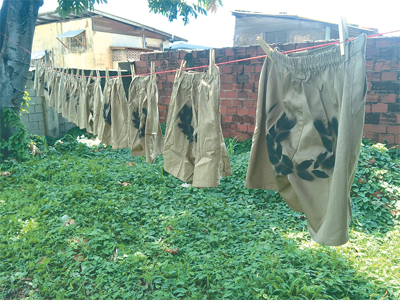 Originally published in the Sunday Guardian: Sunday, October 9, 2016
Originally published in the Sunday Guardian: Sunday, October 9, 2016




